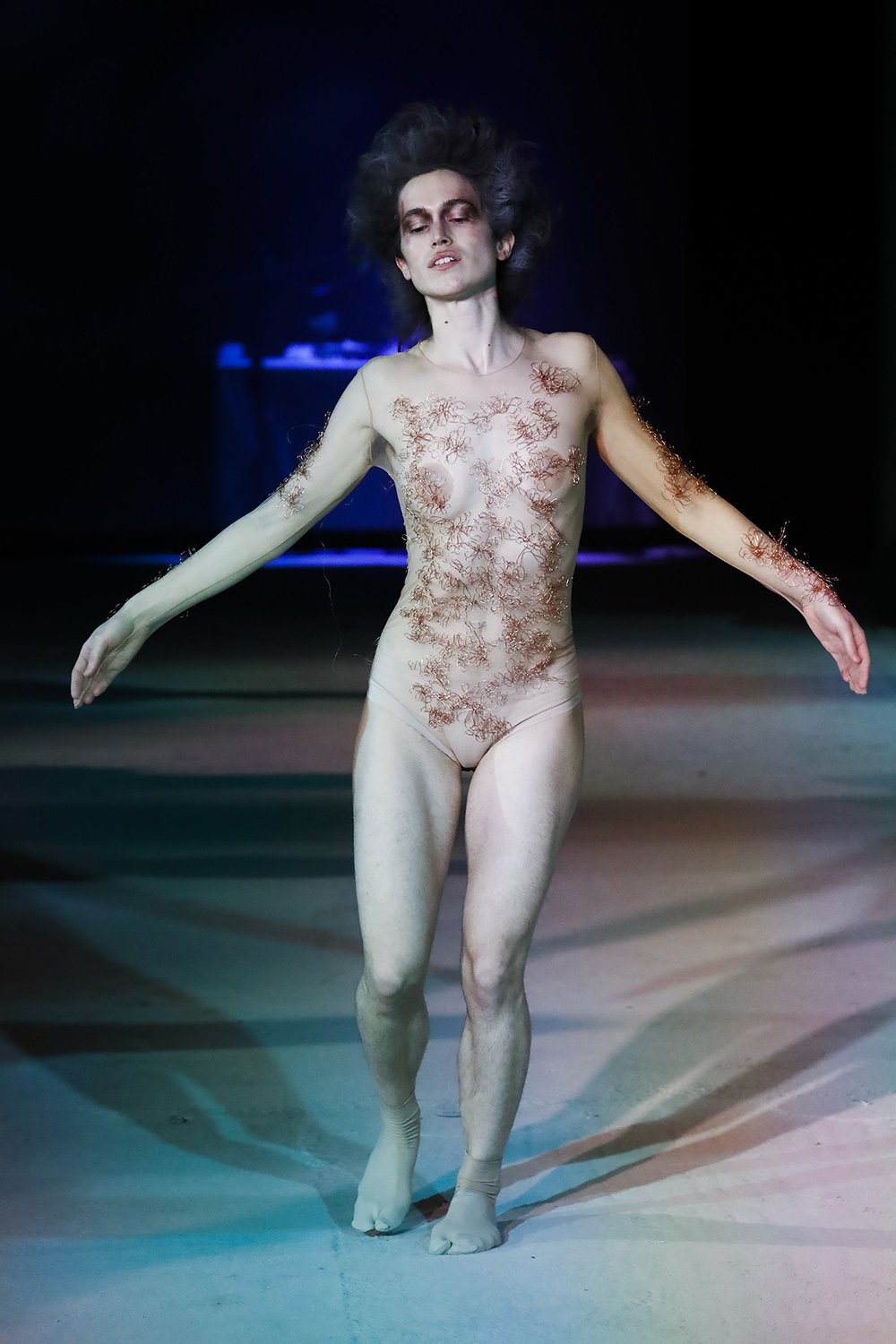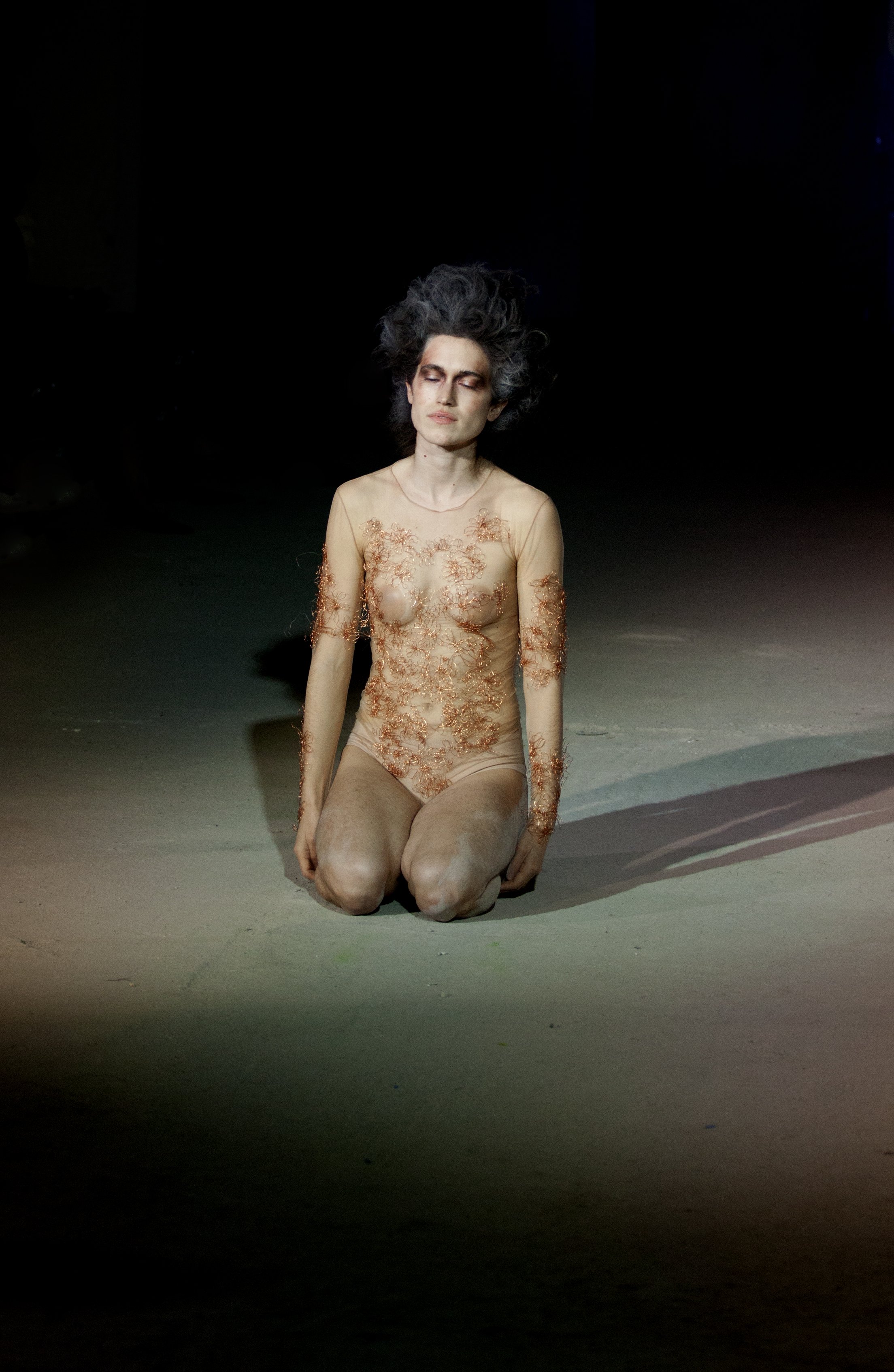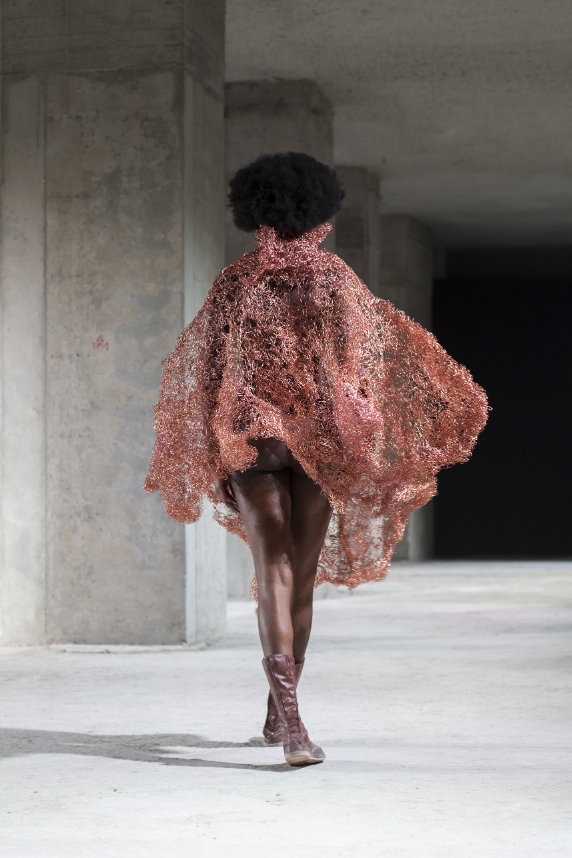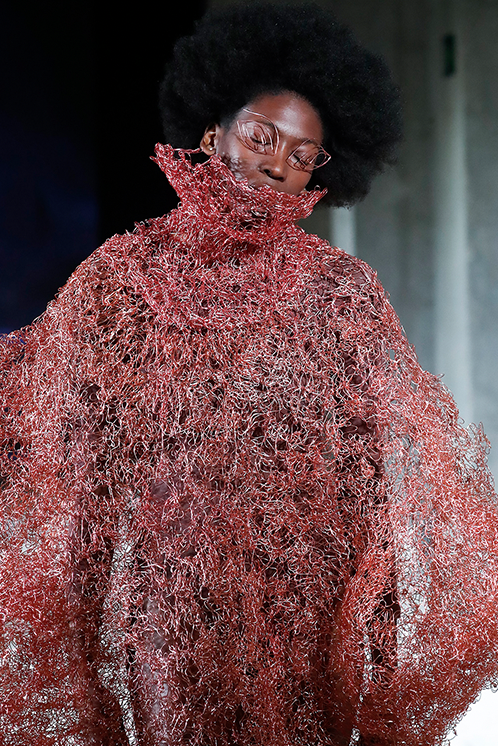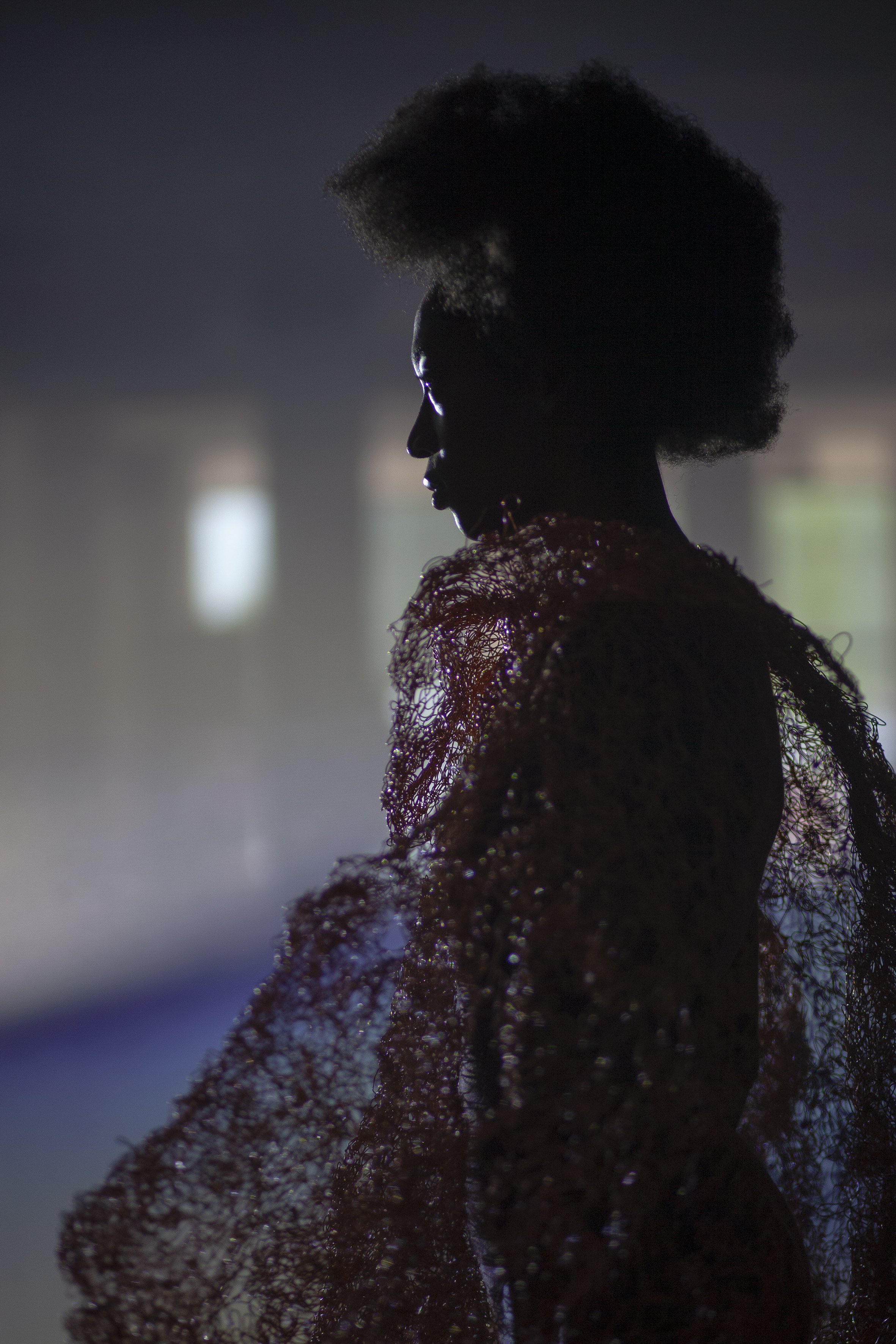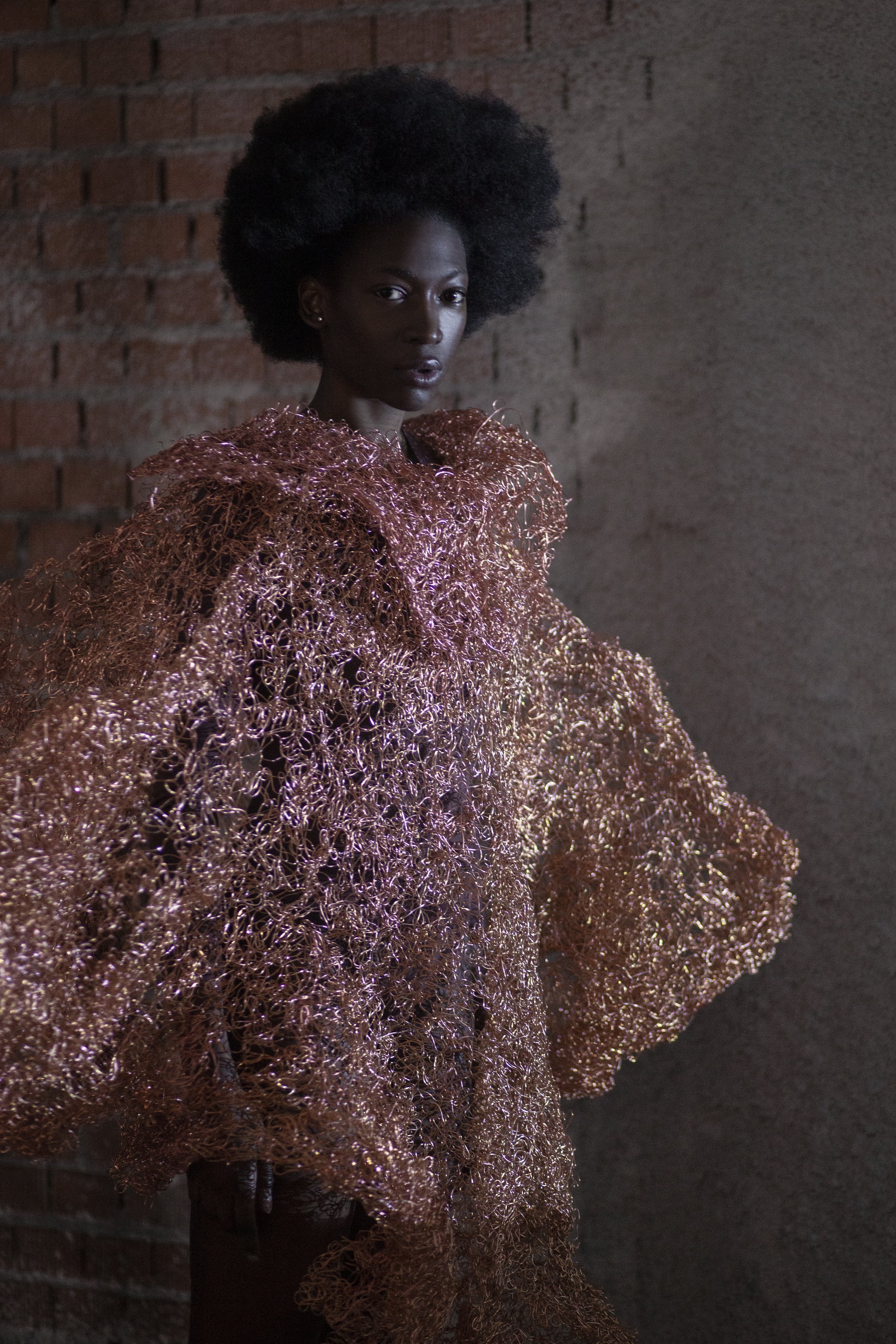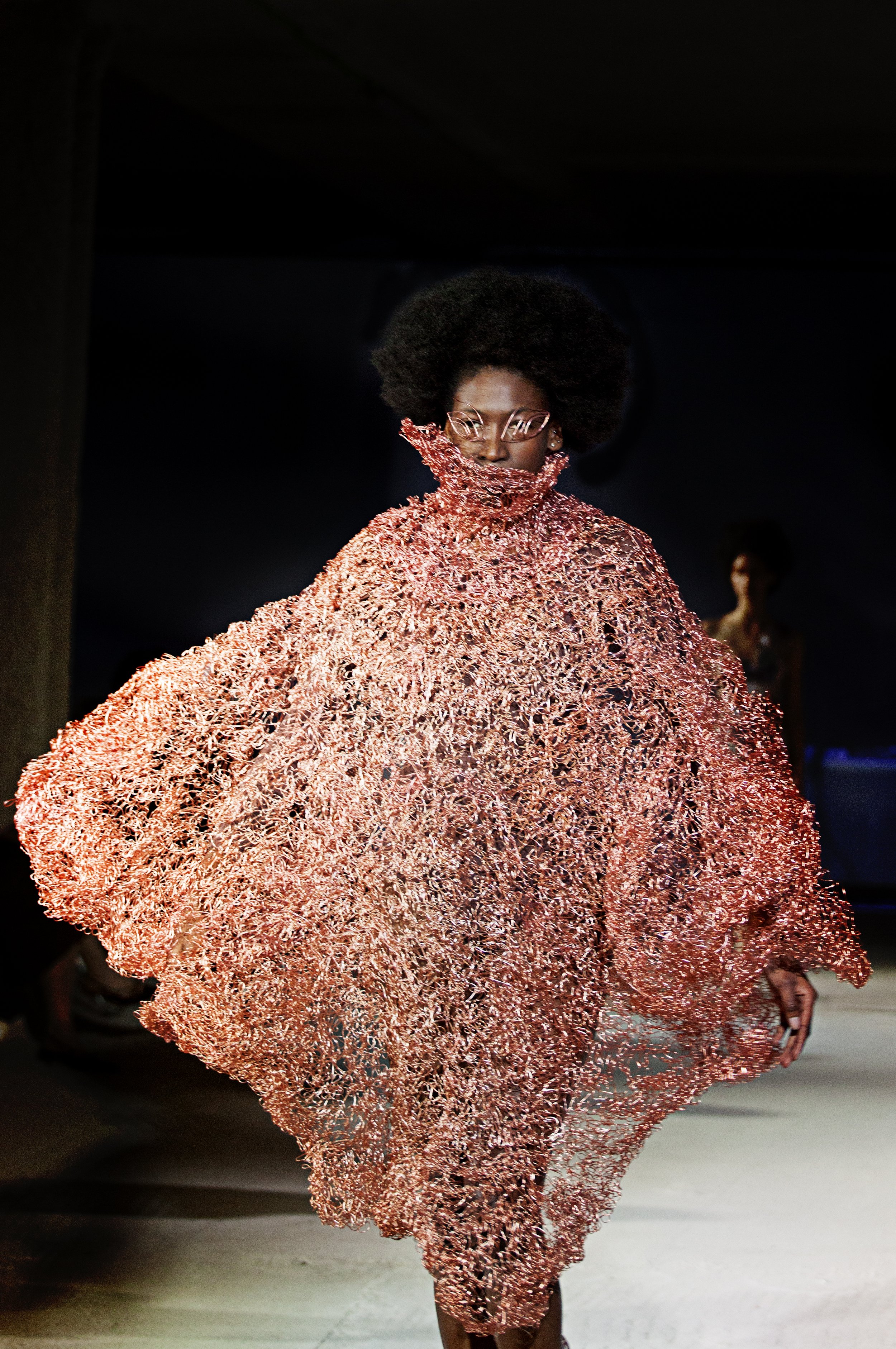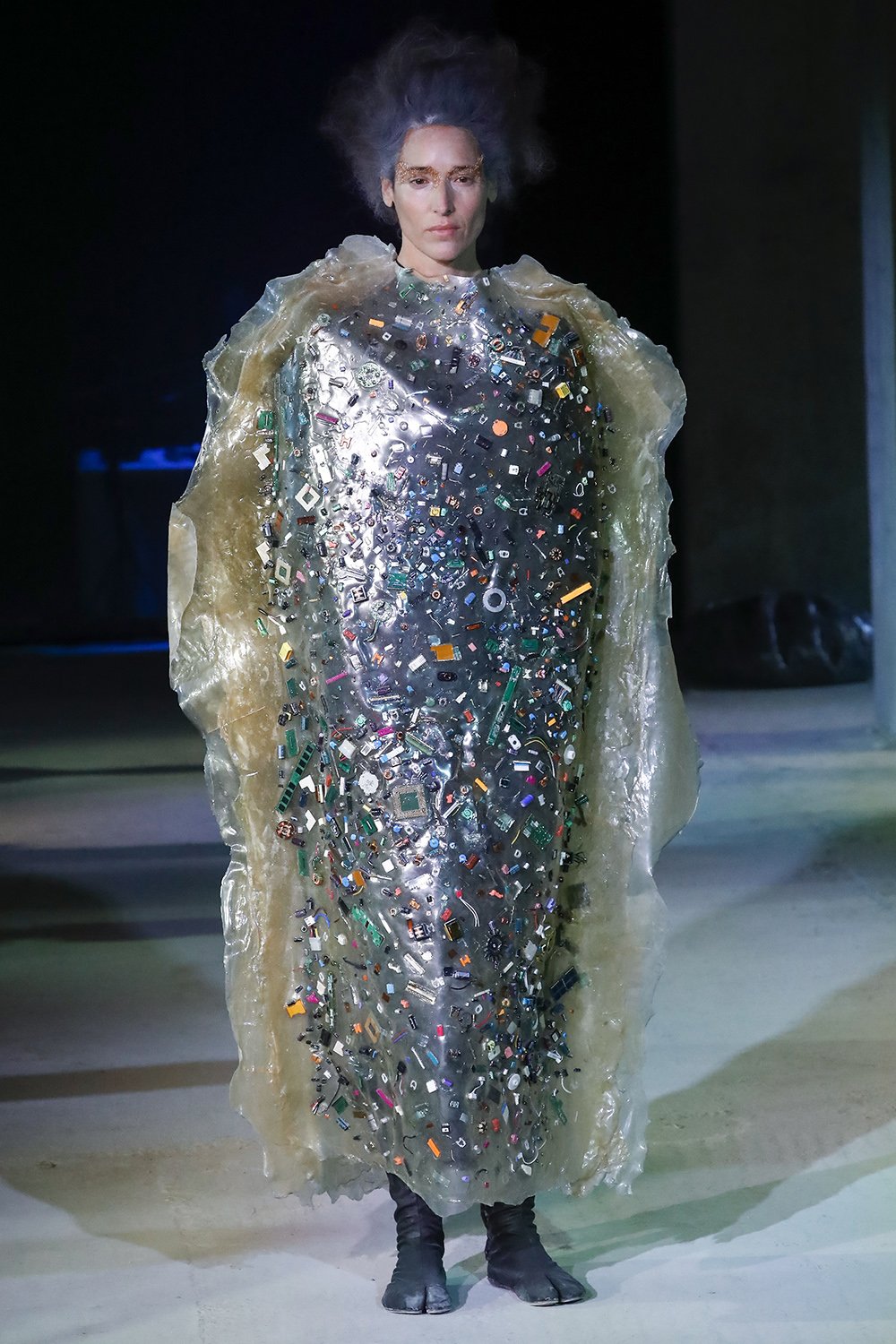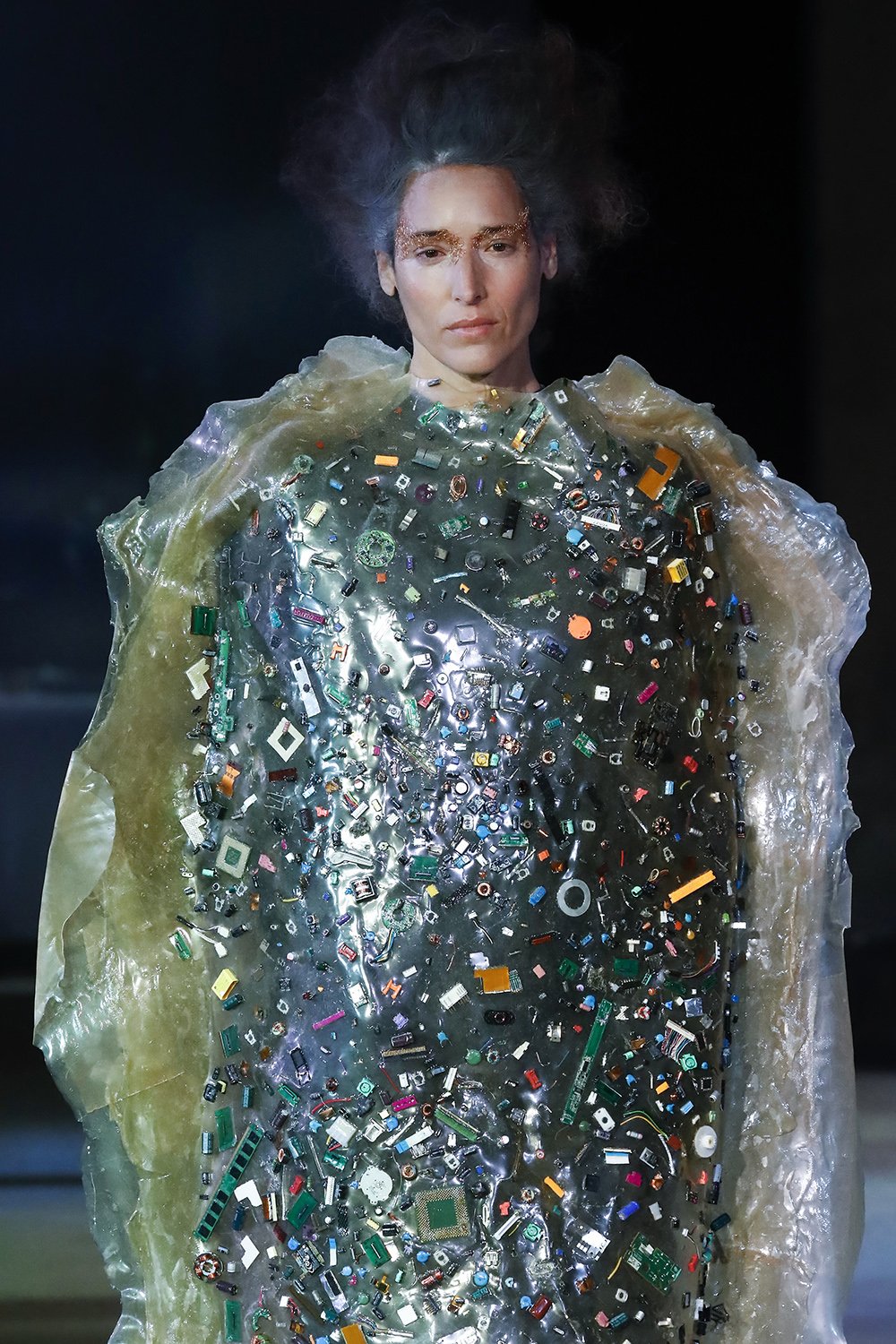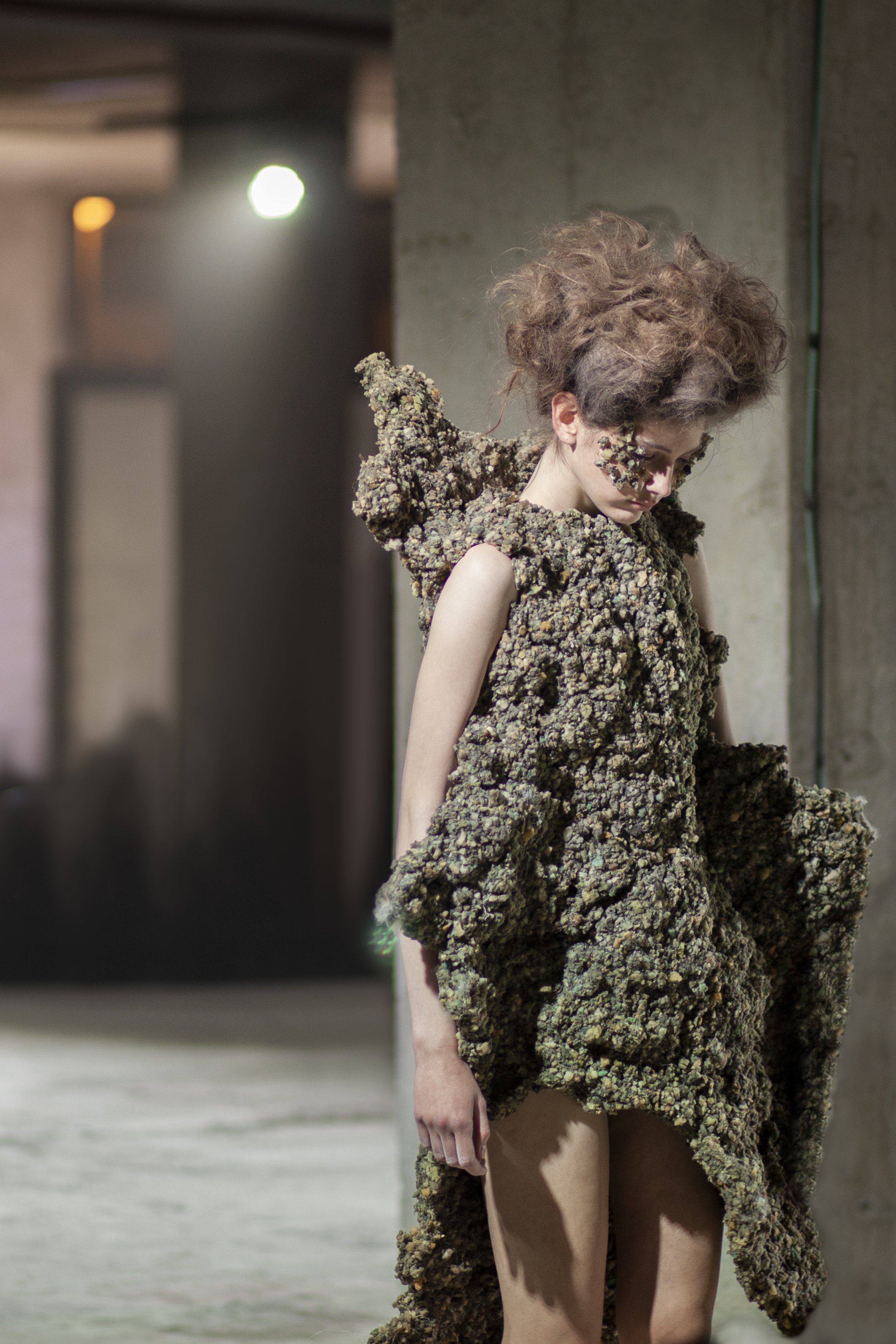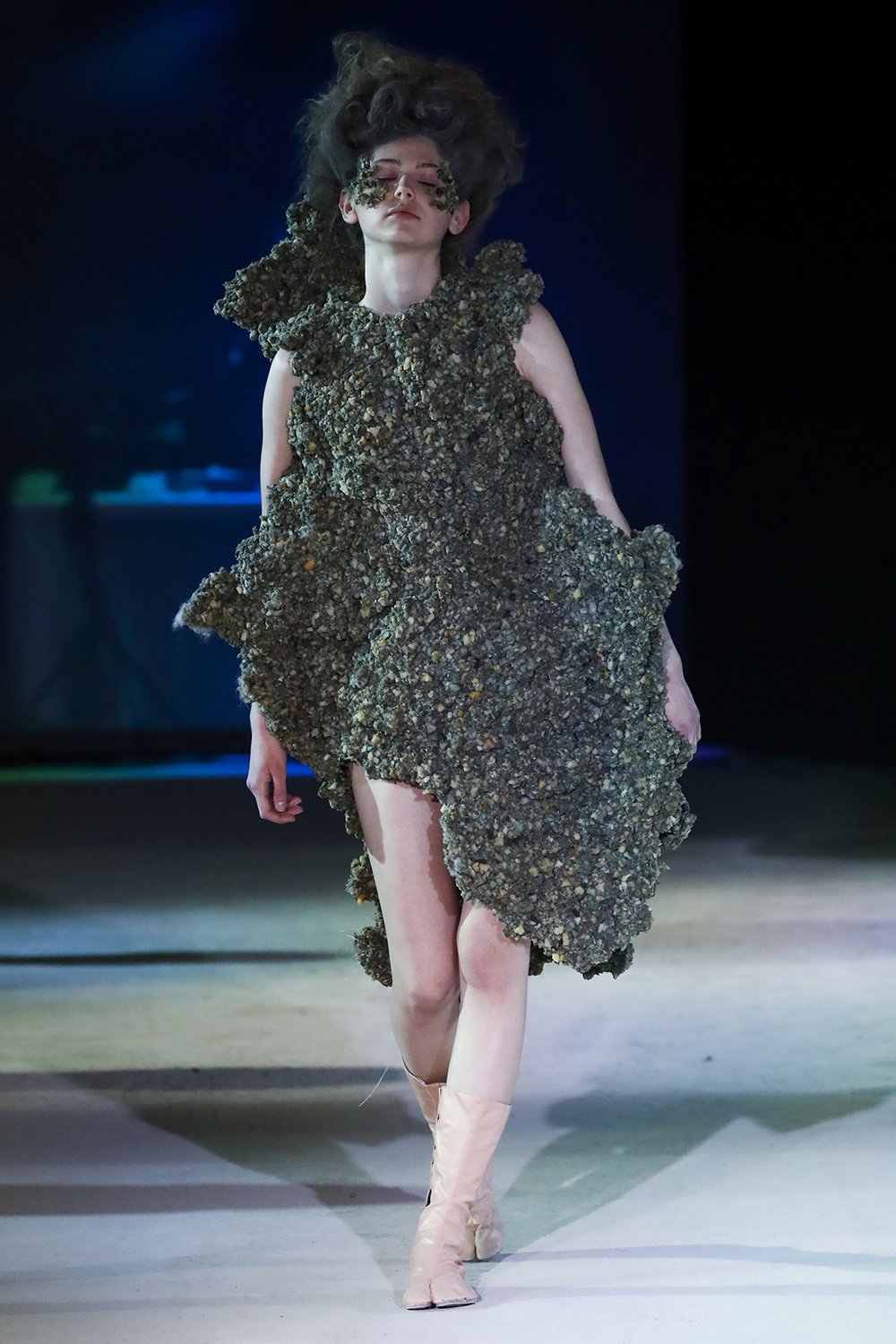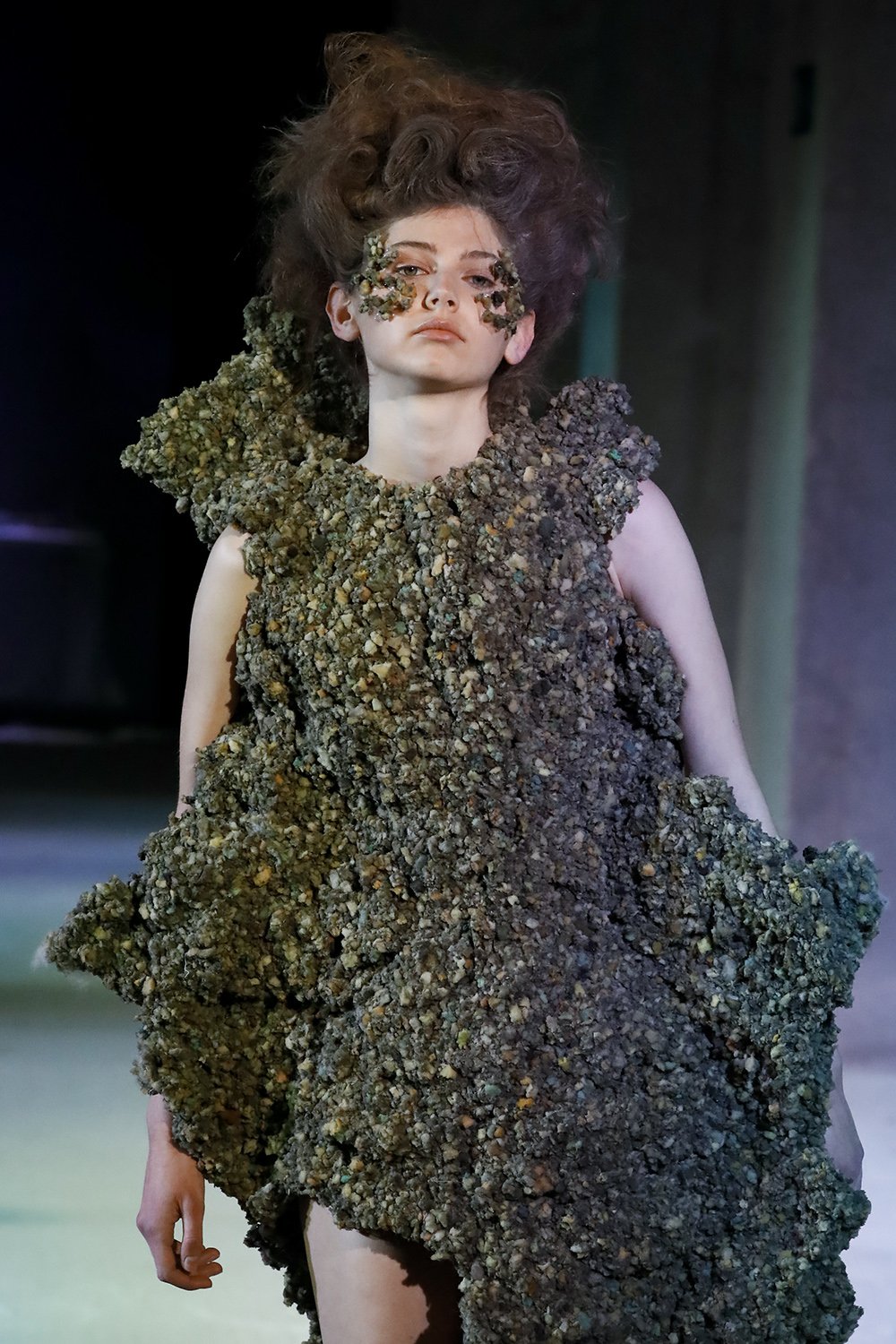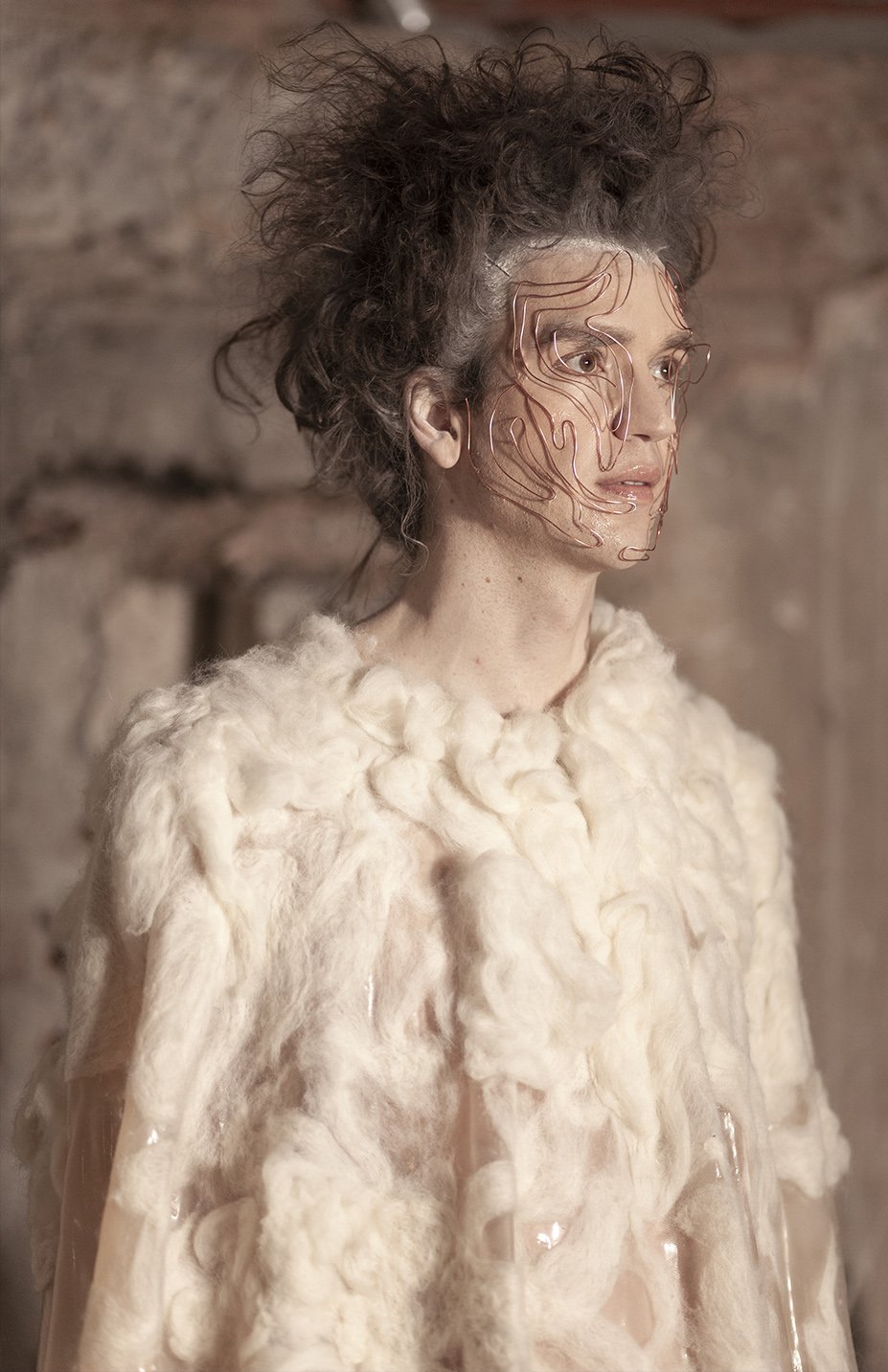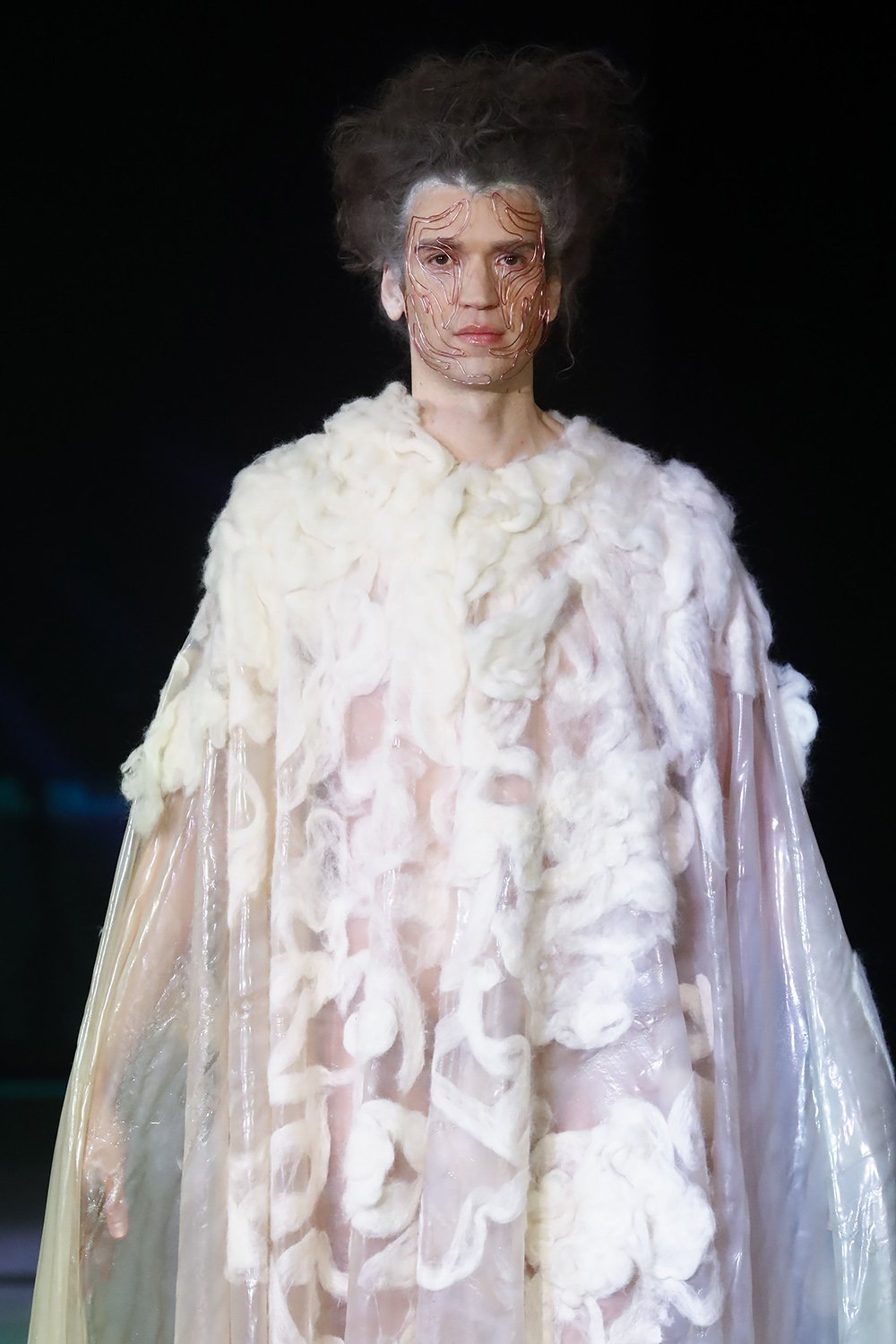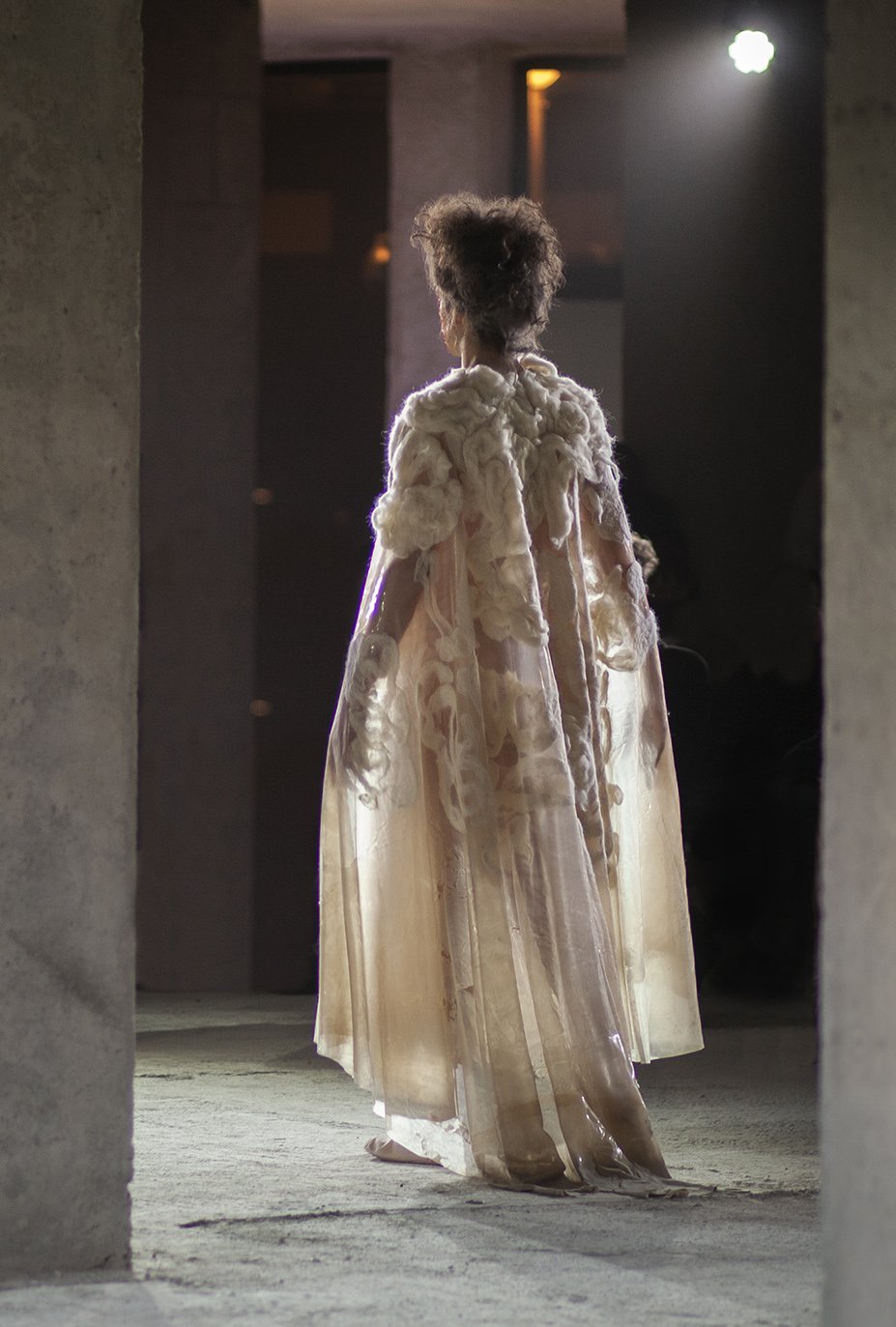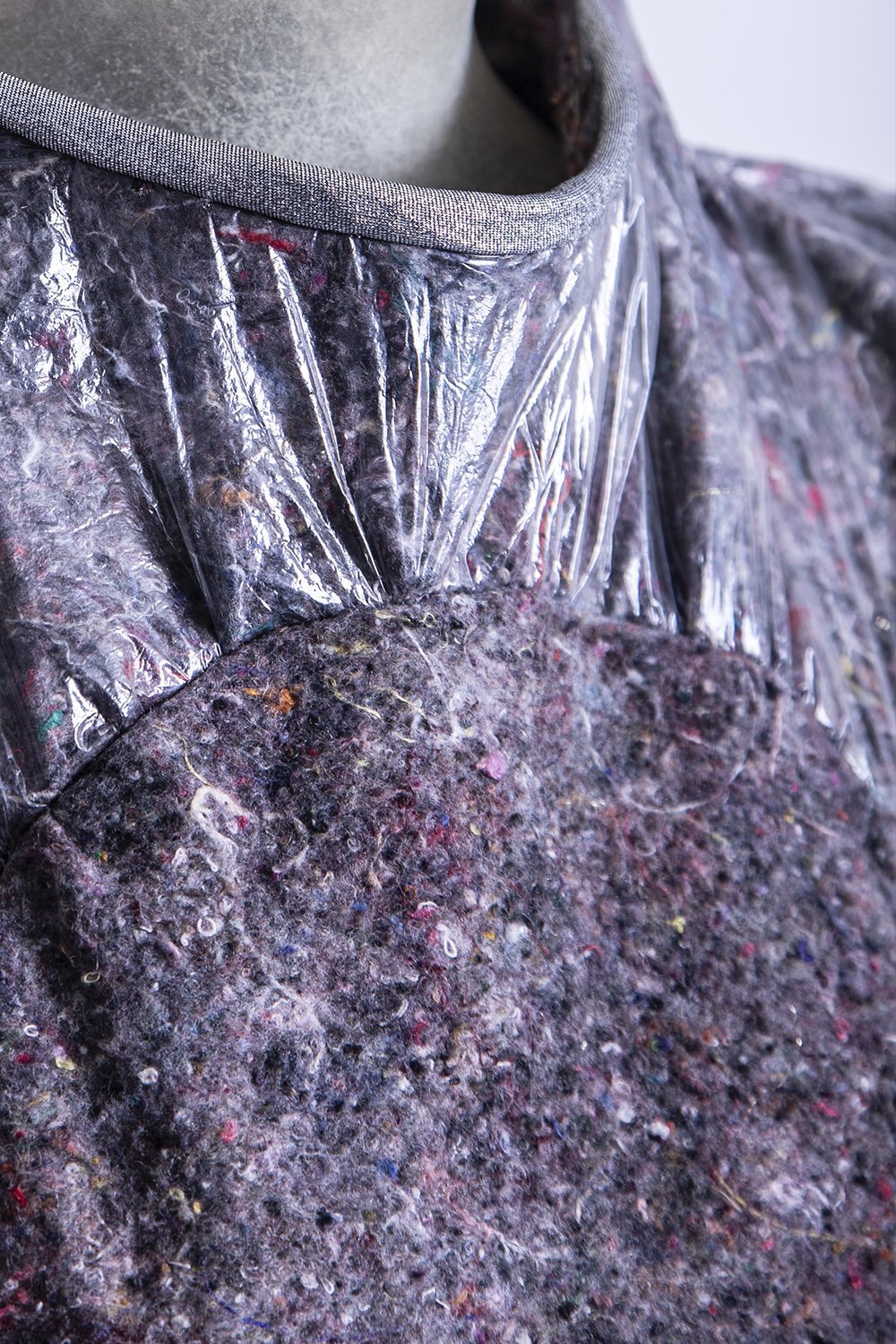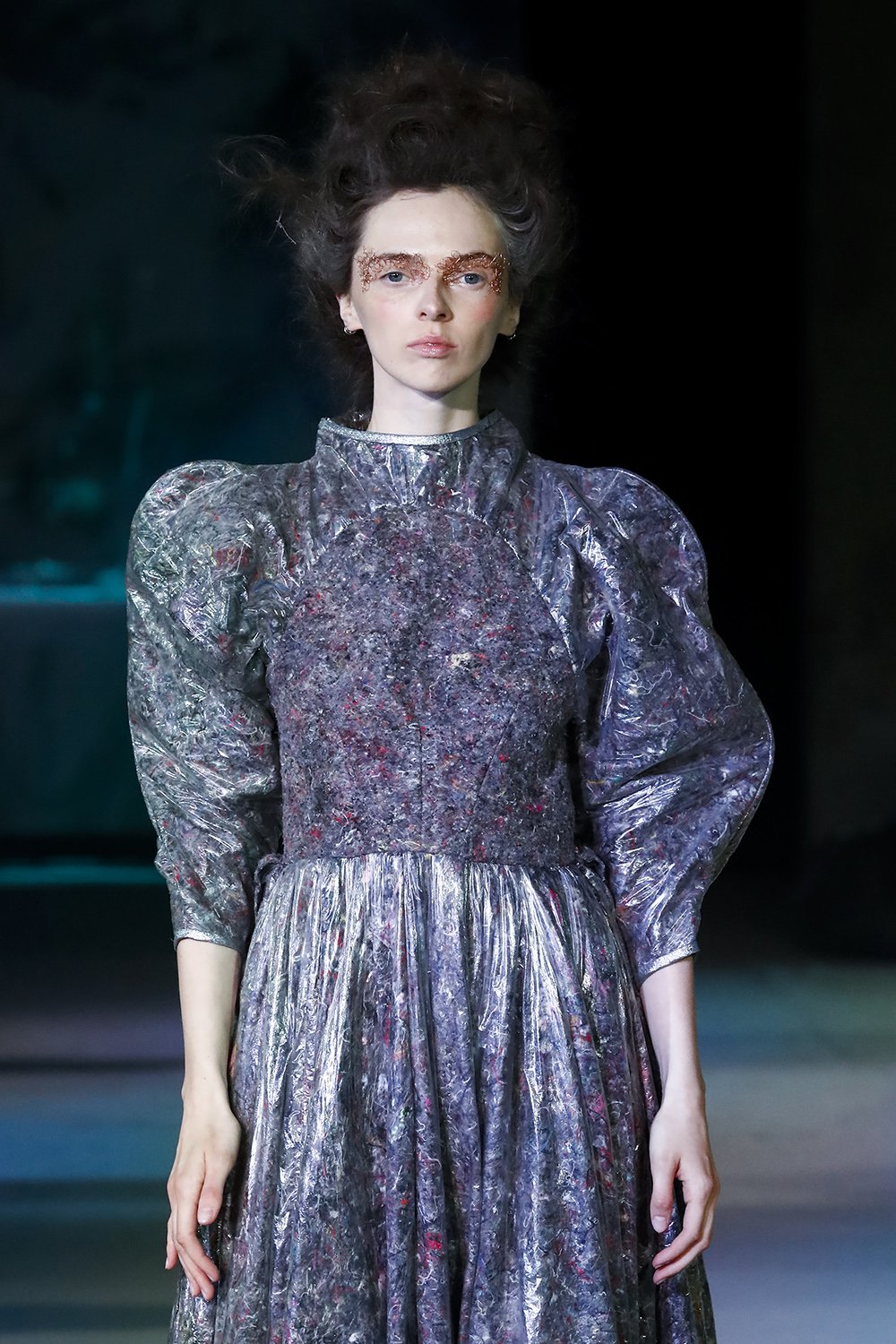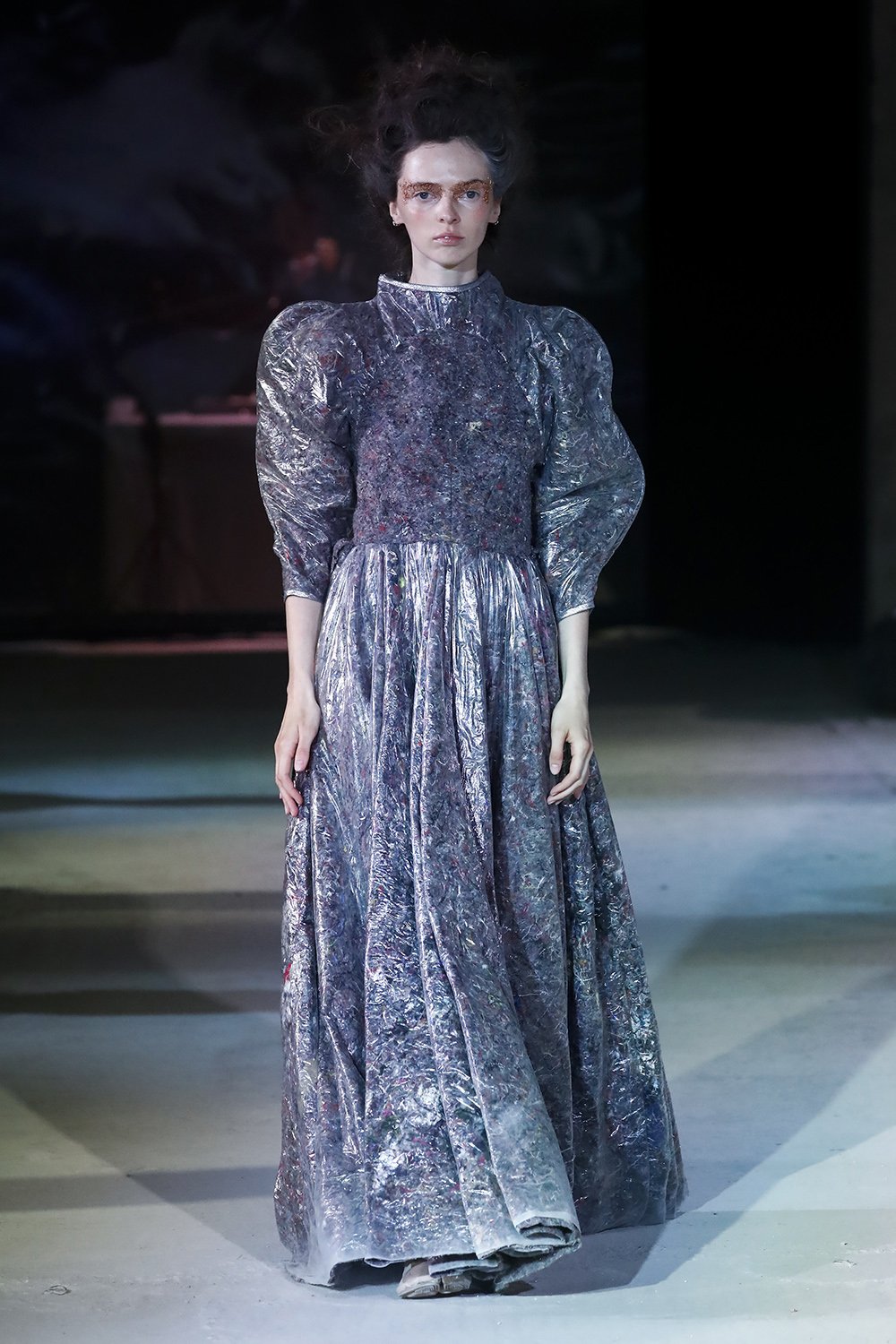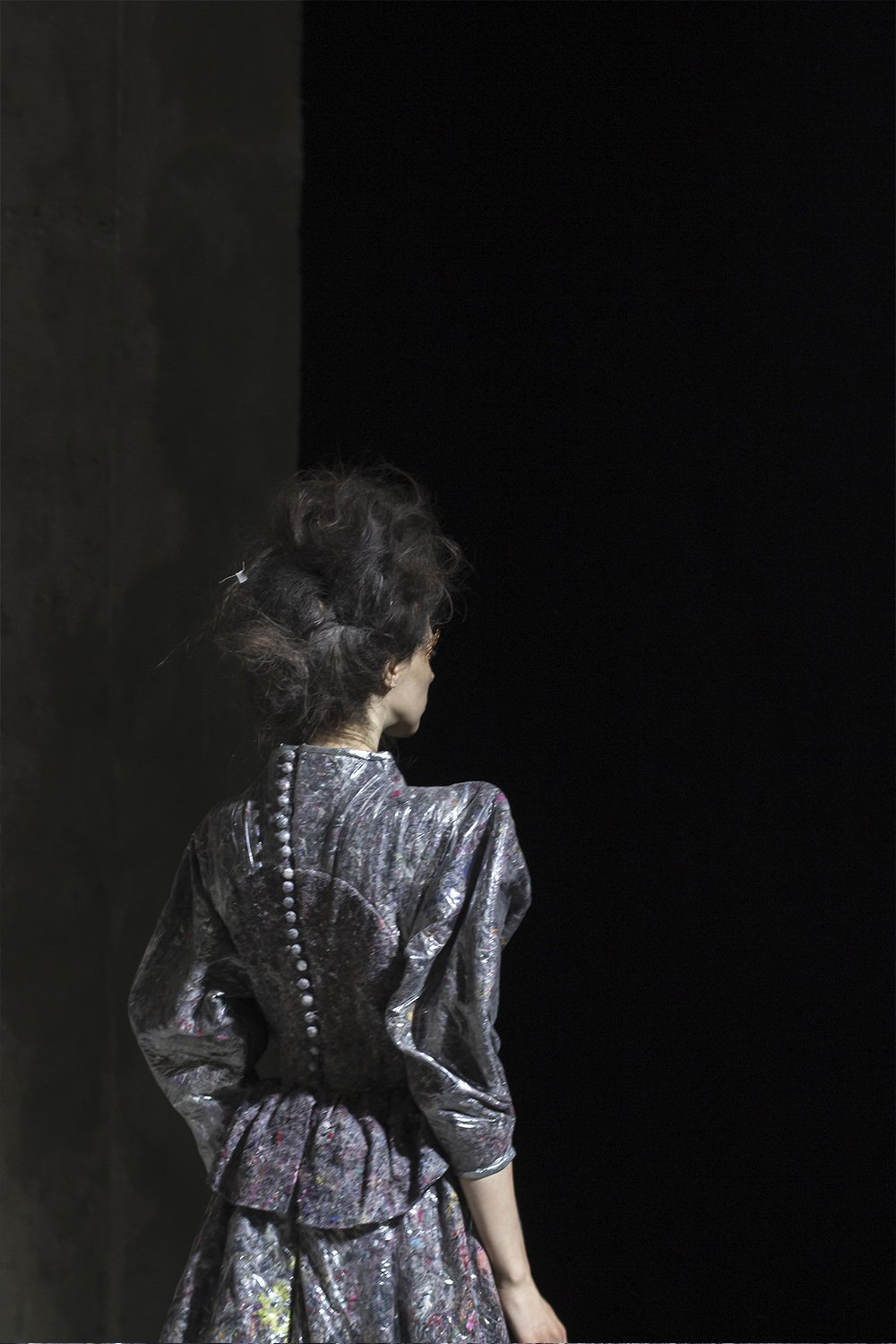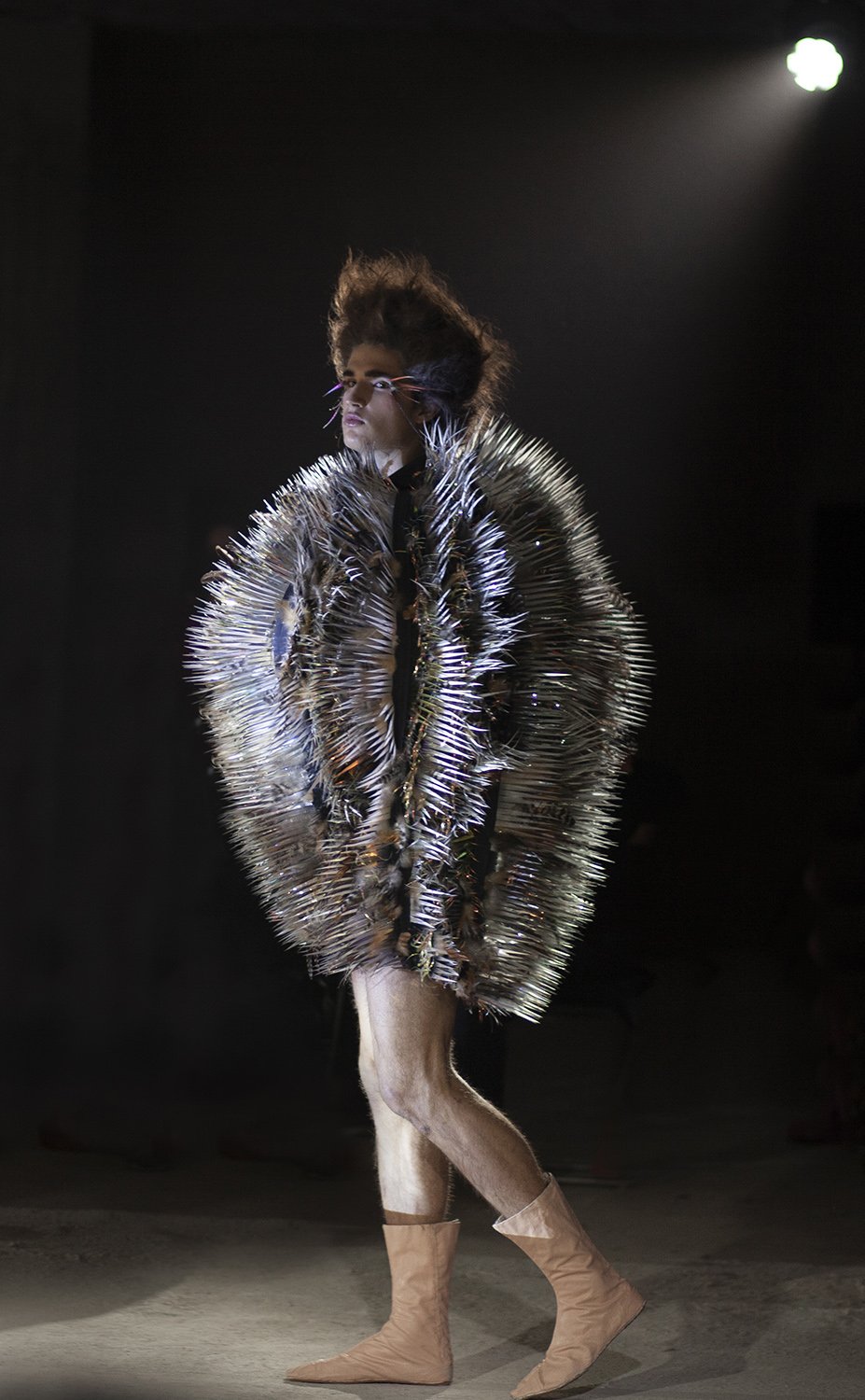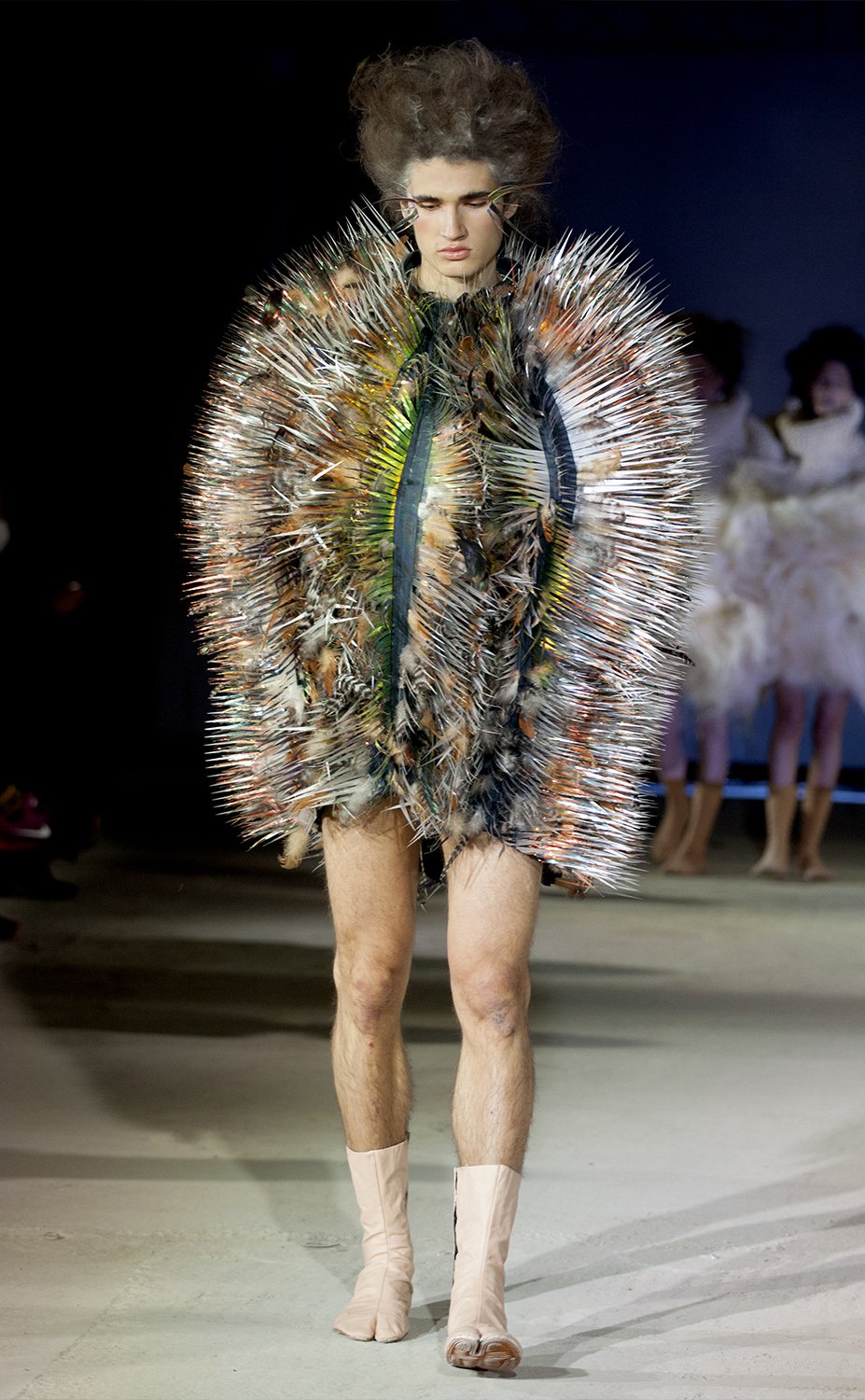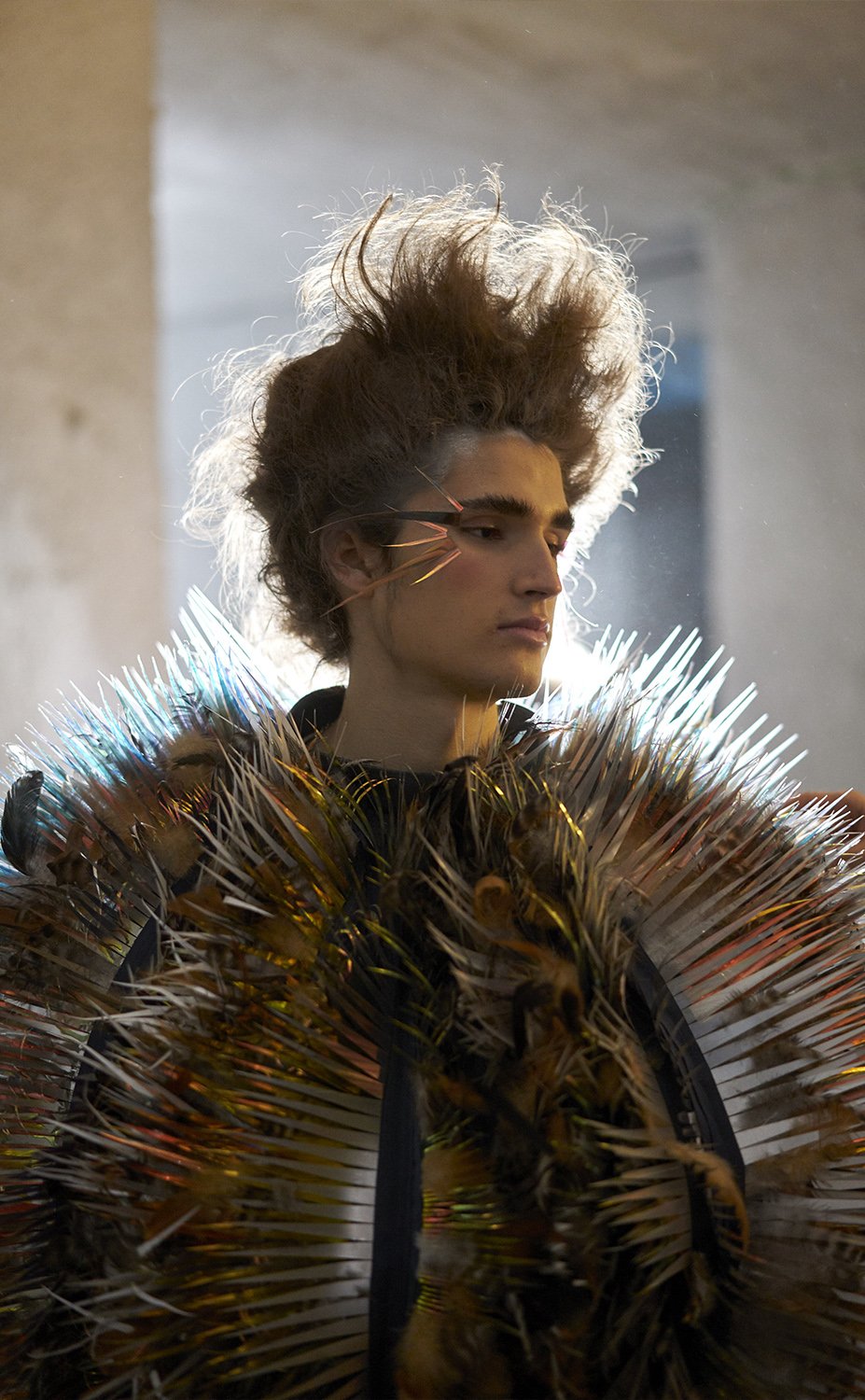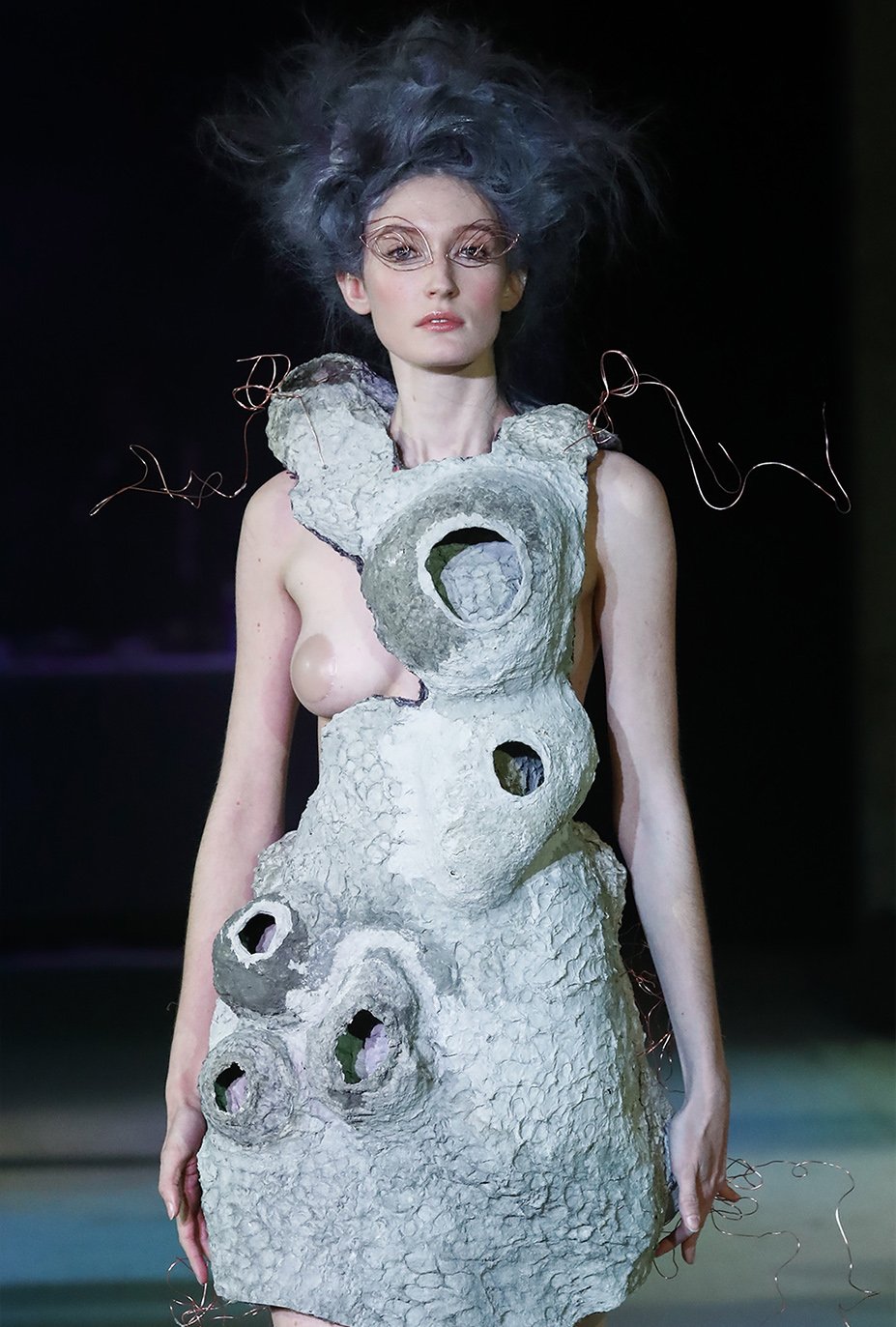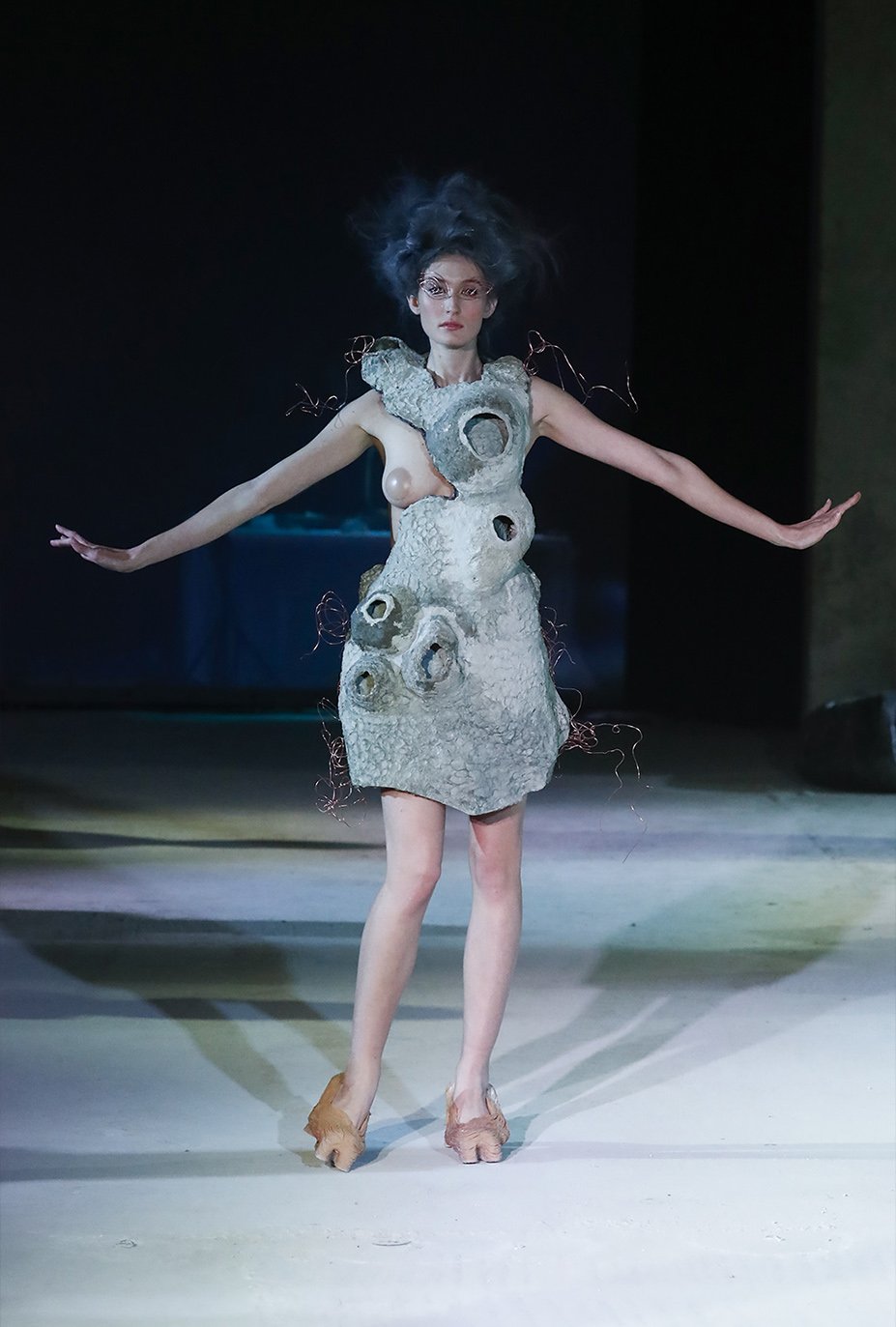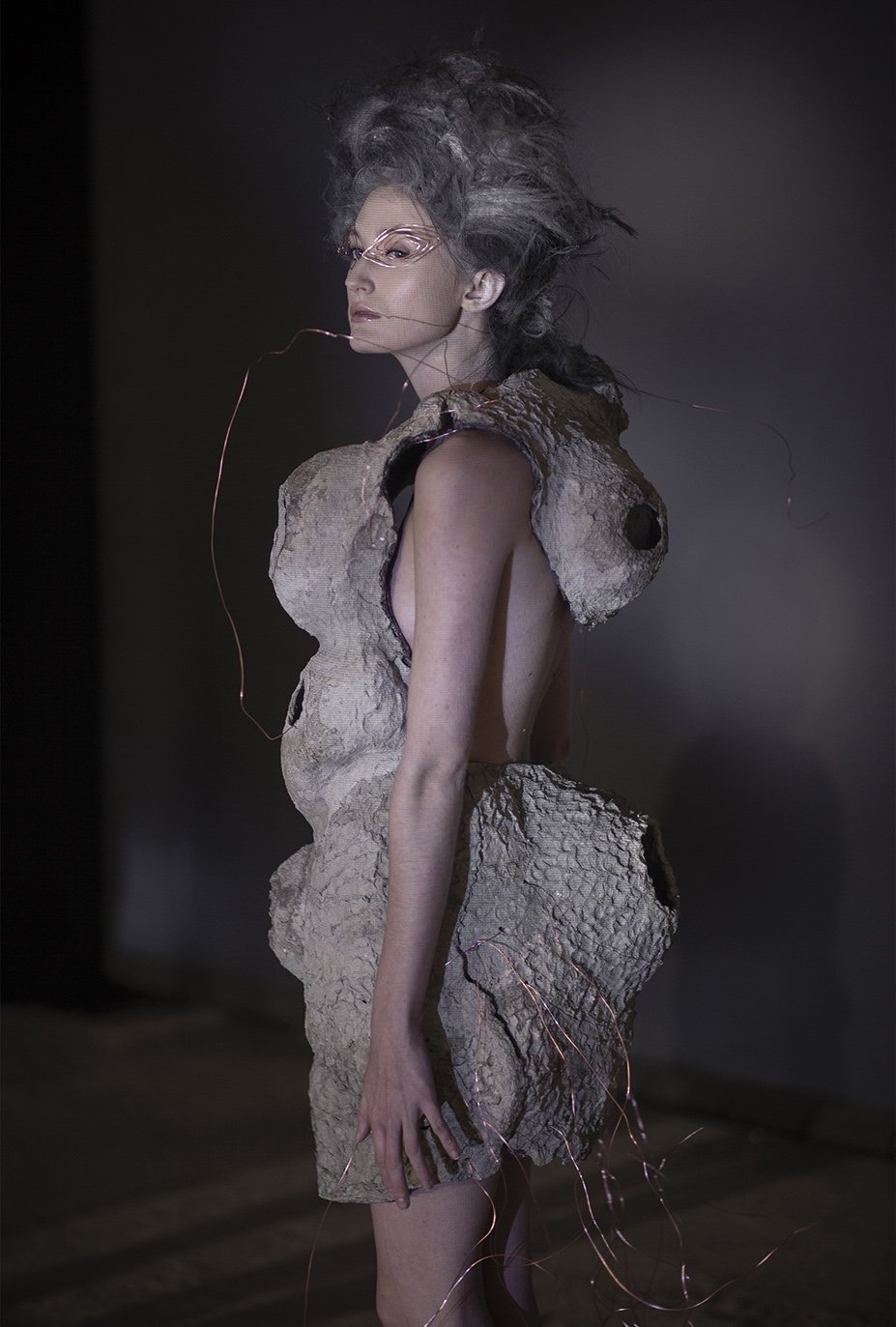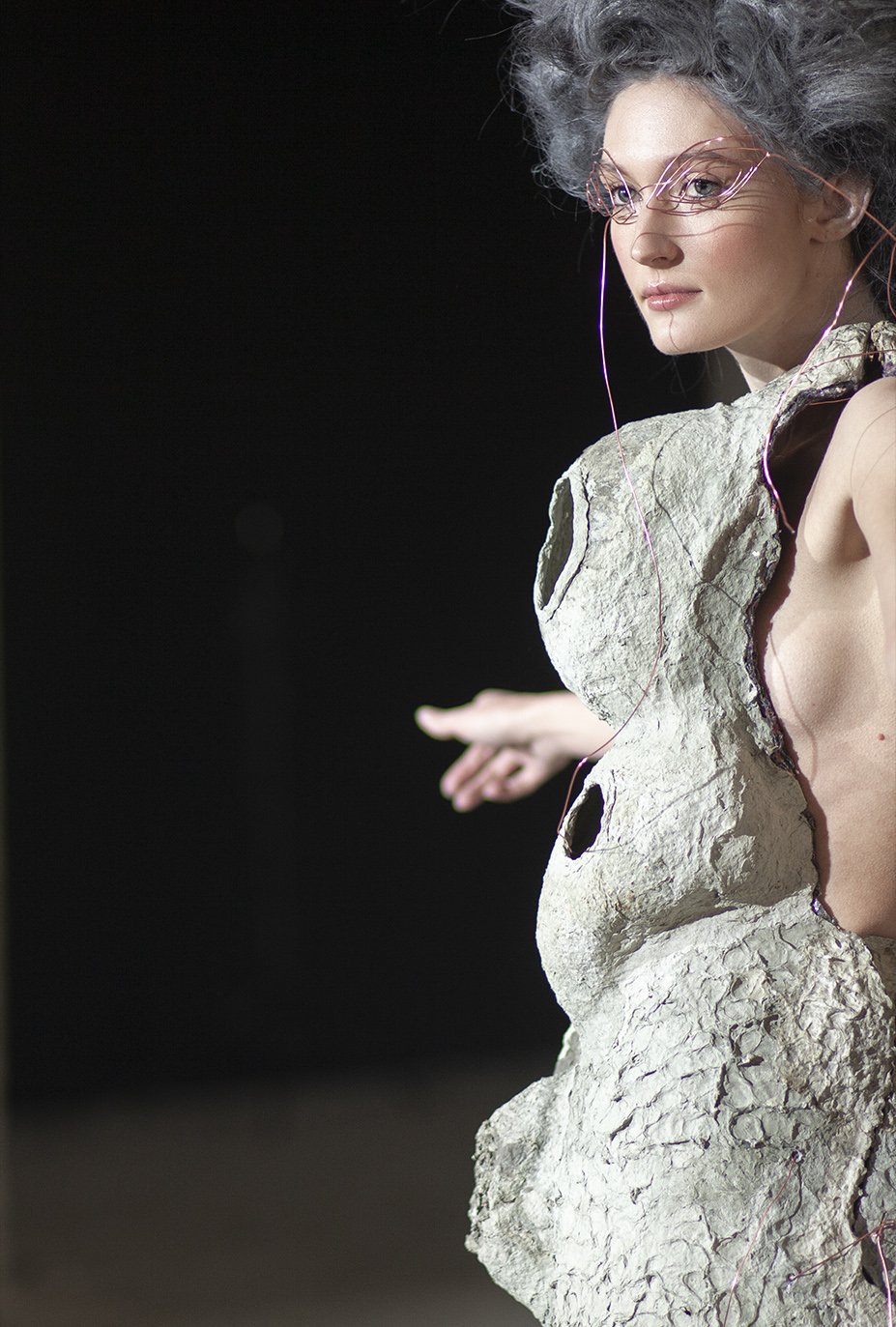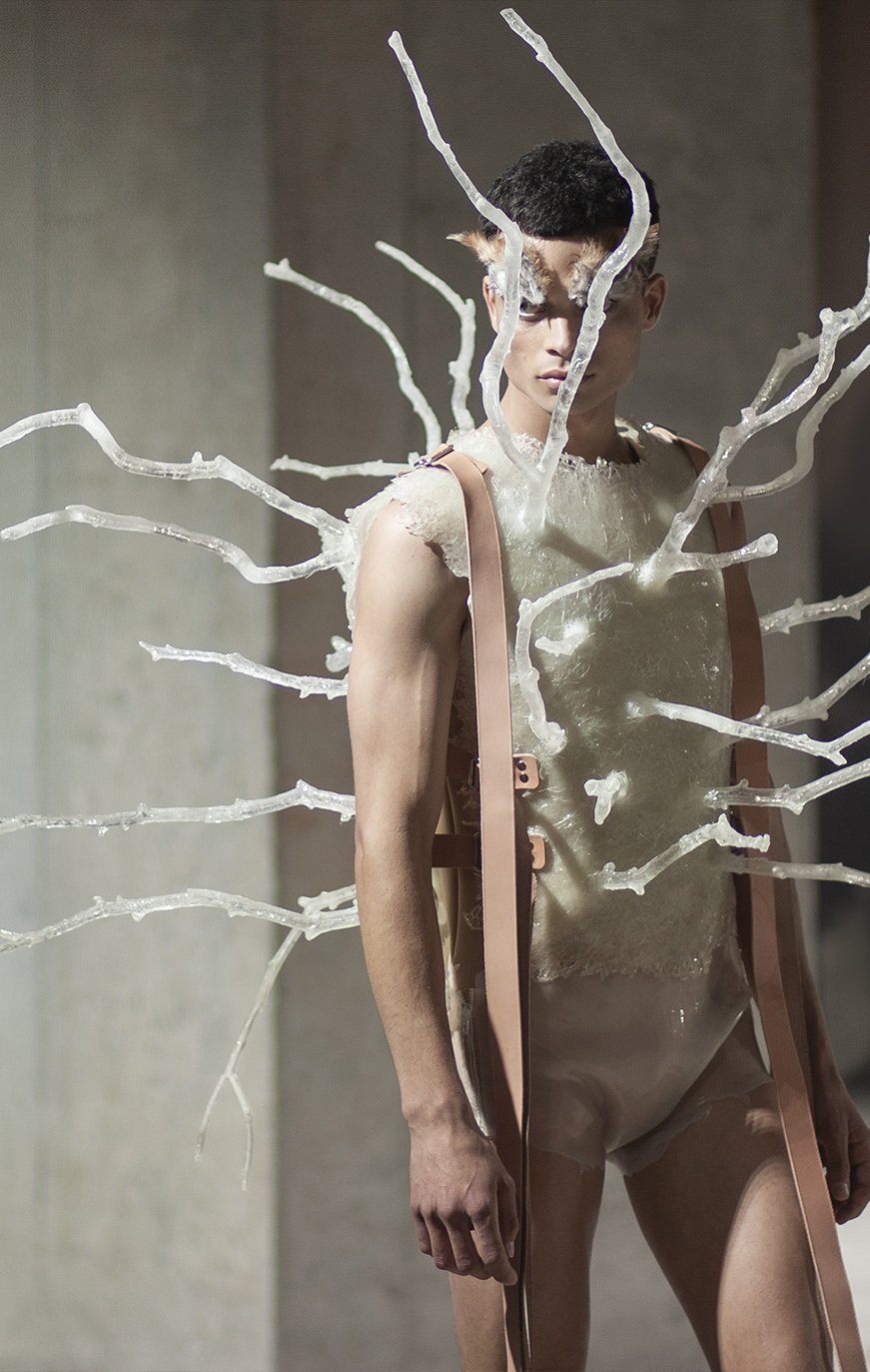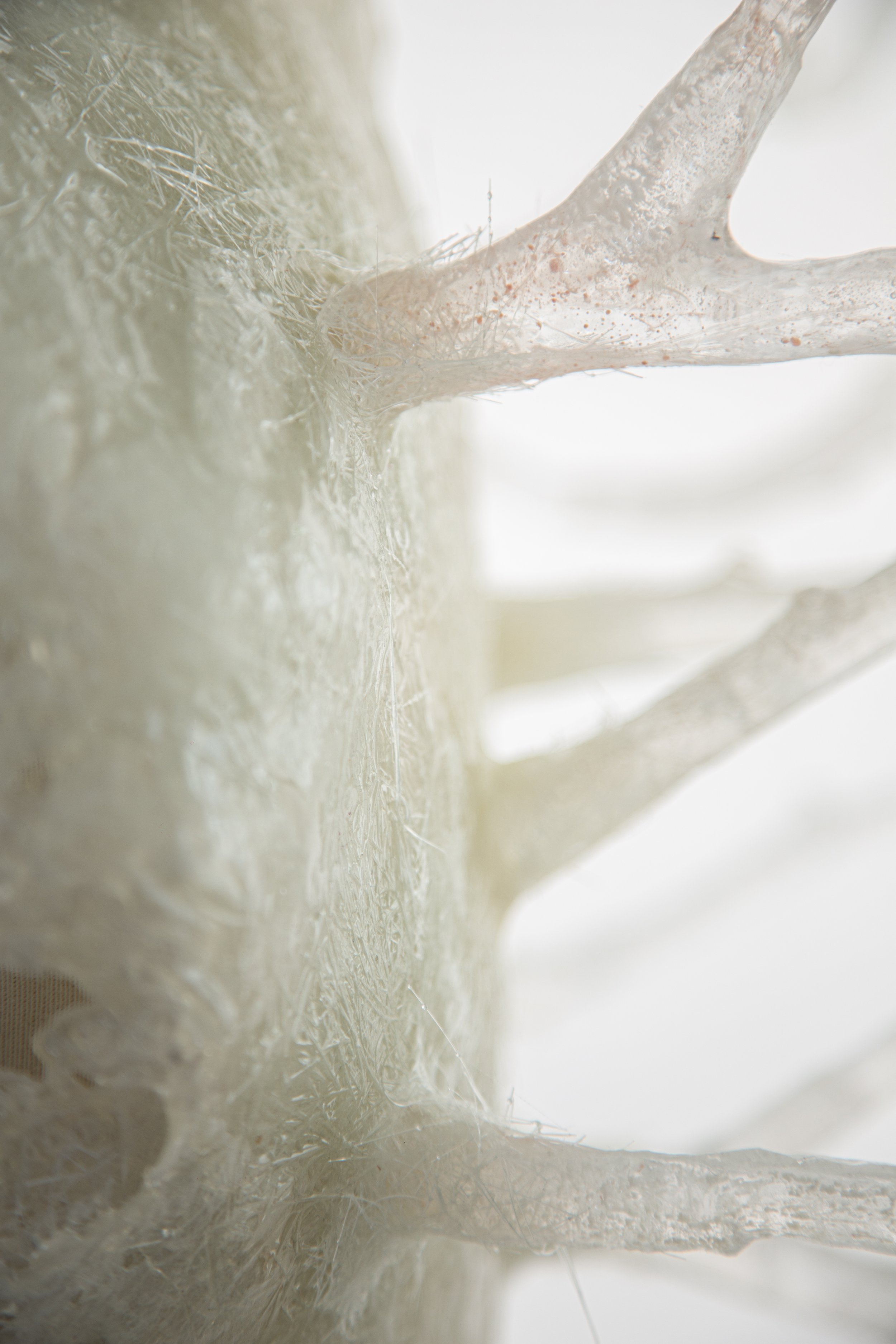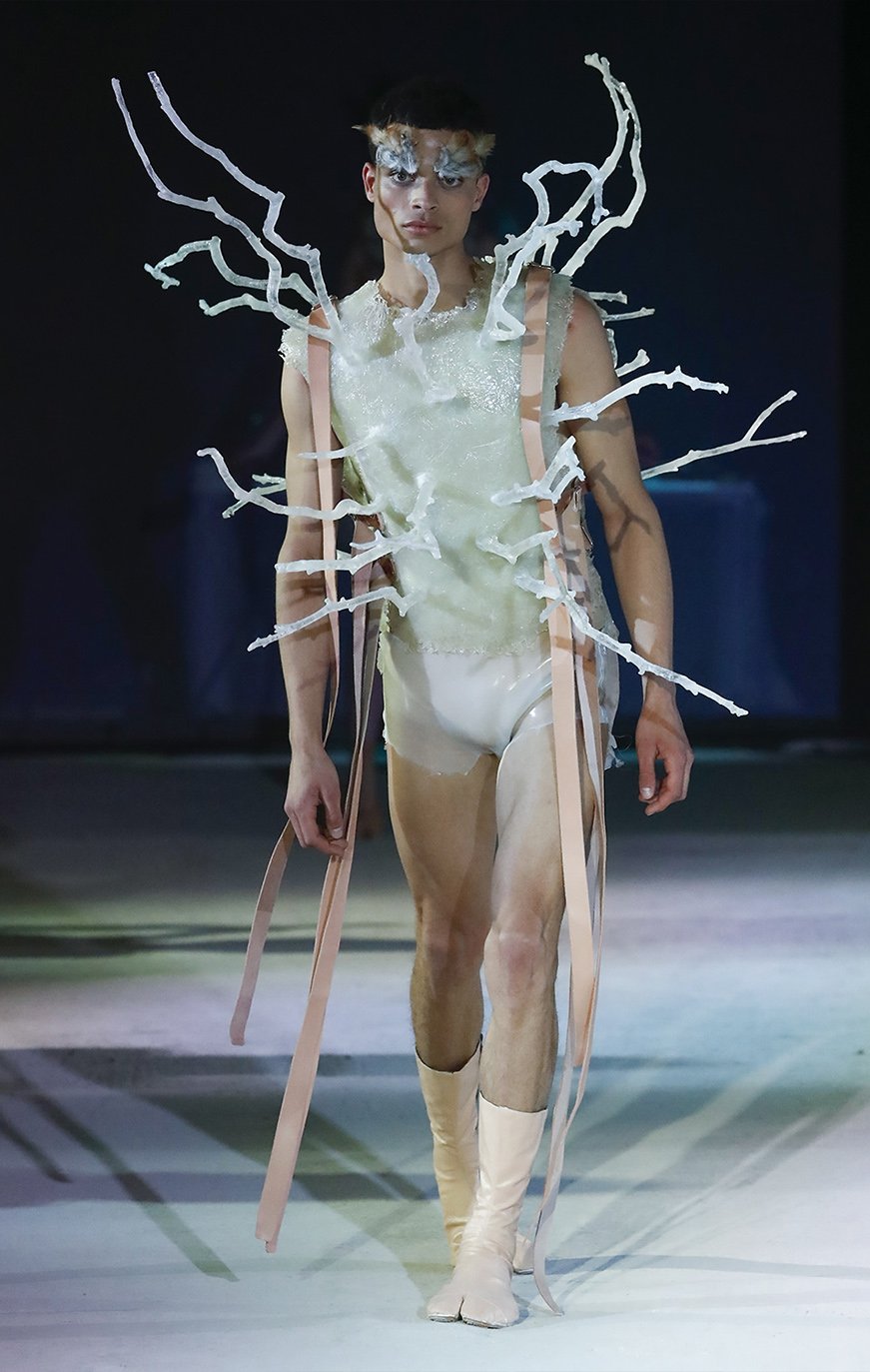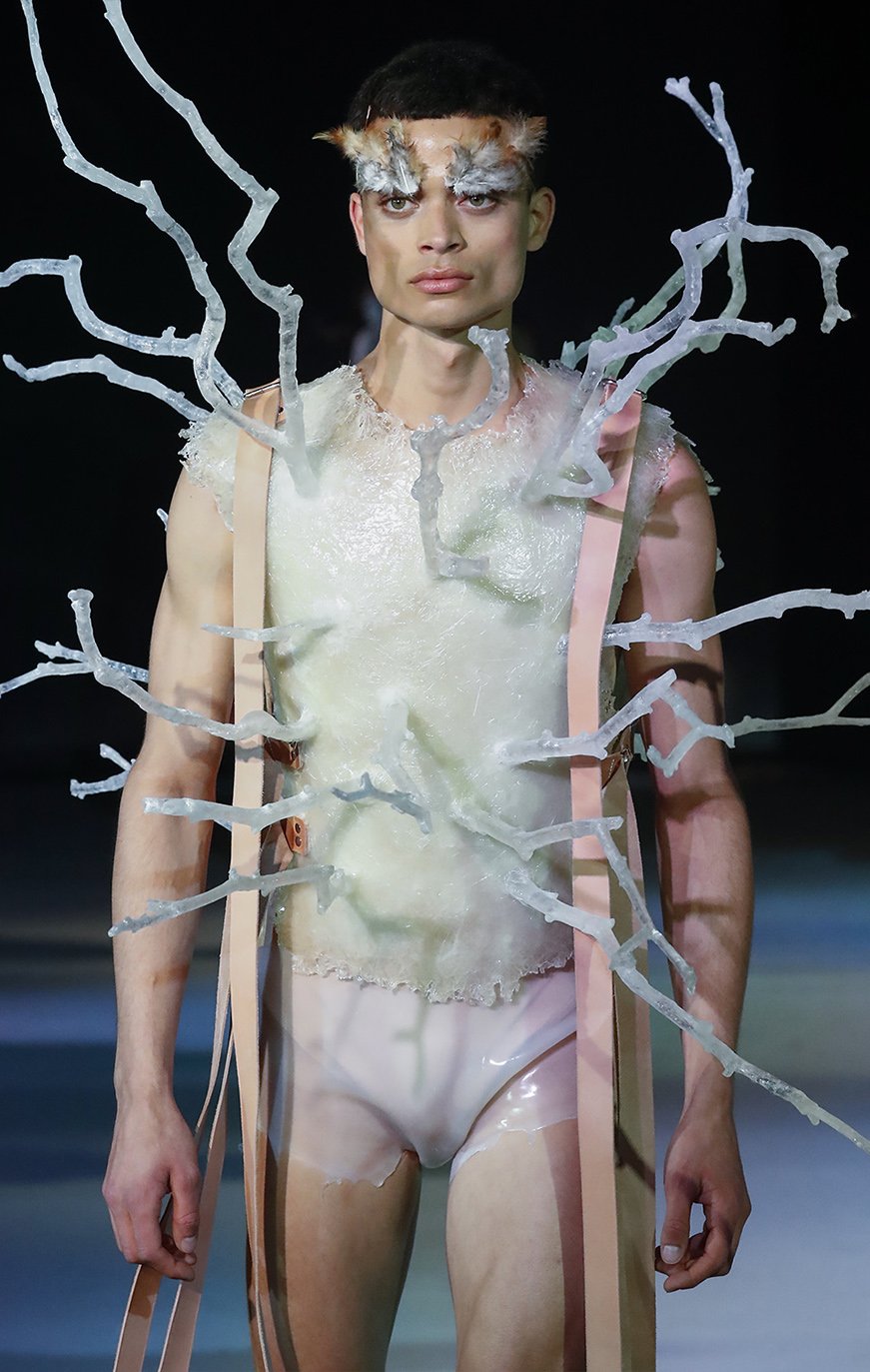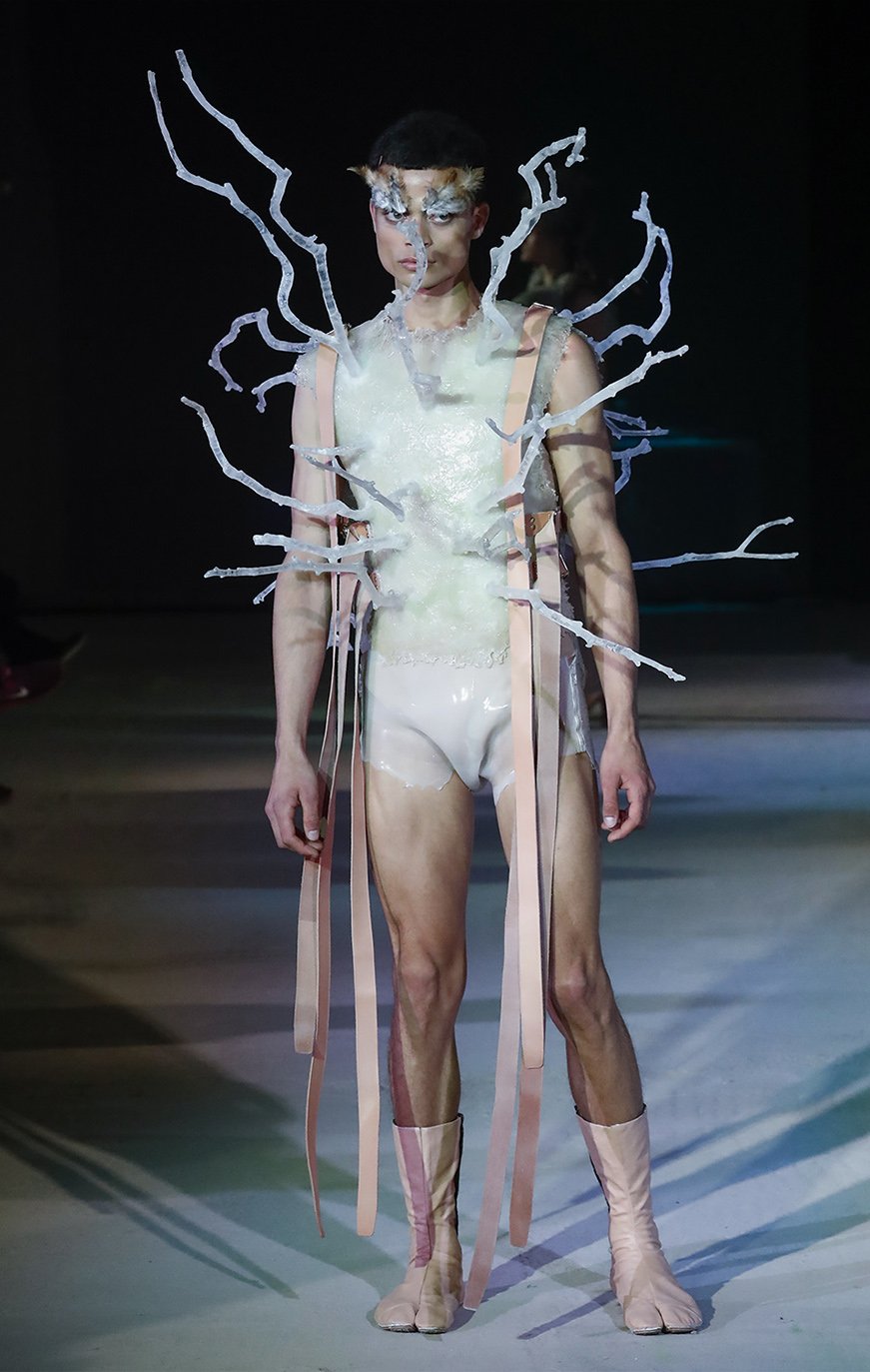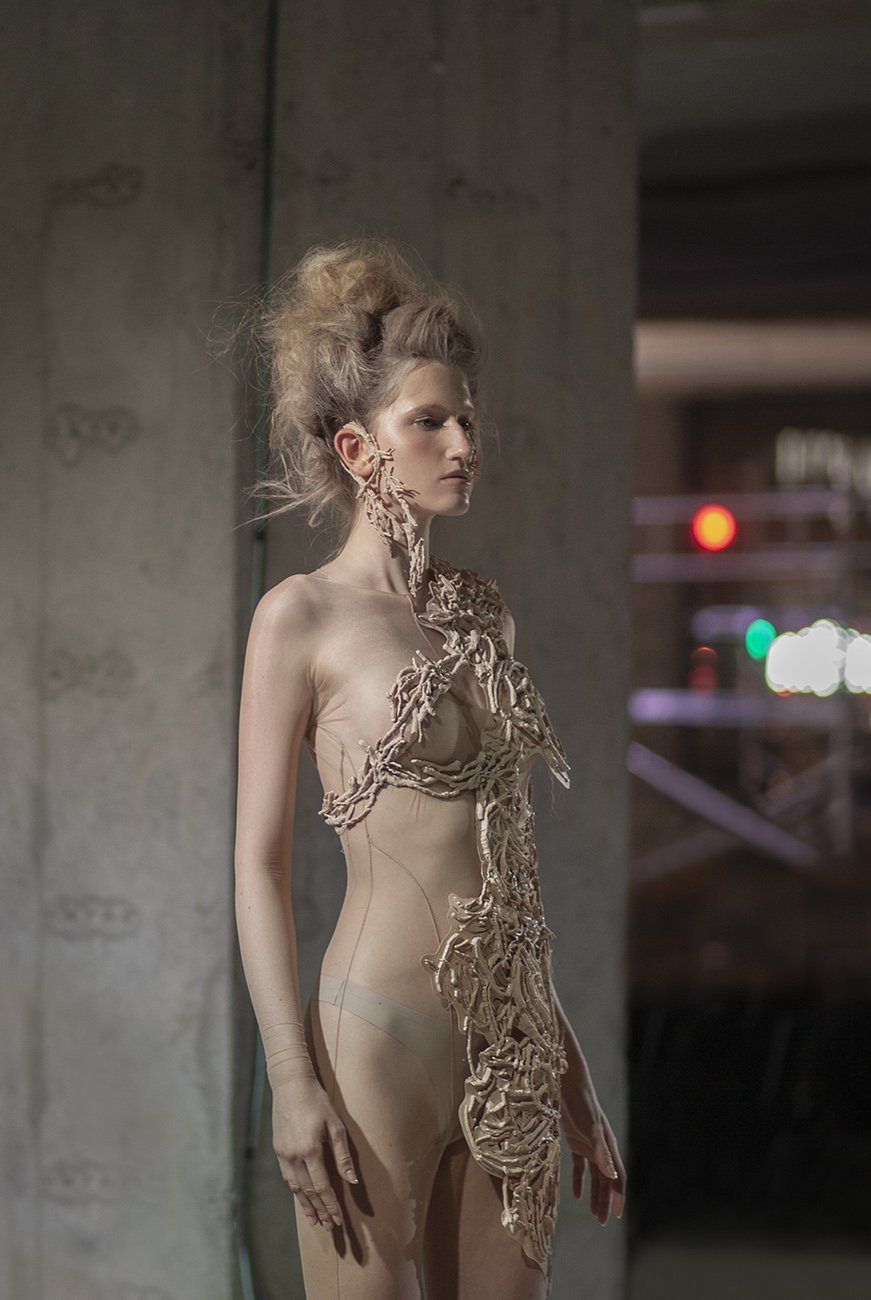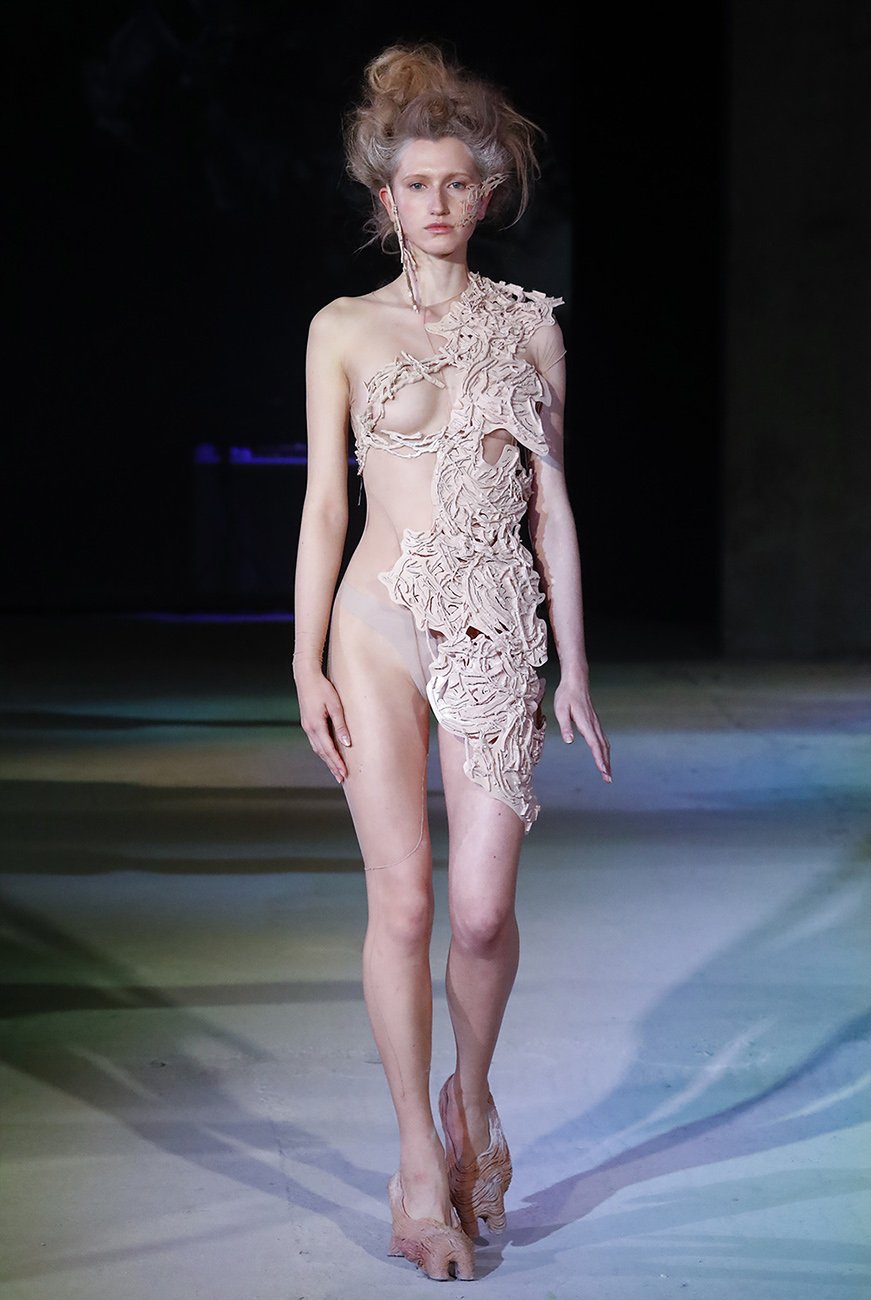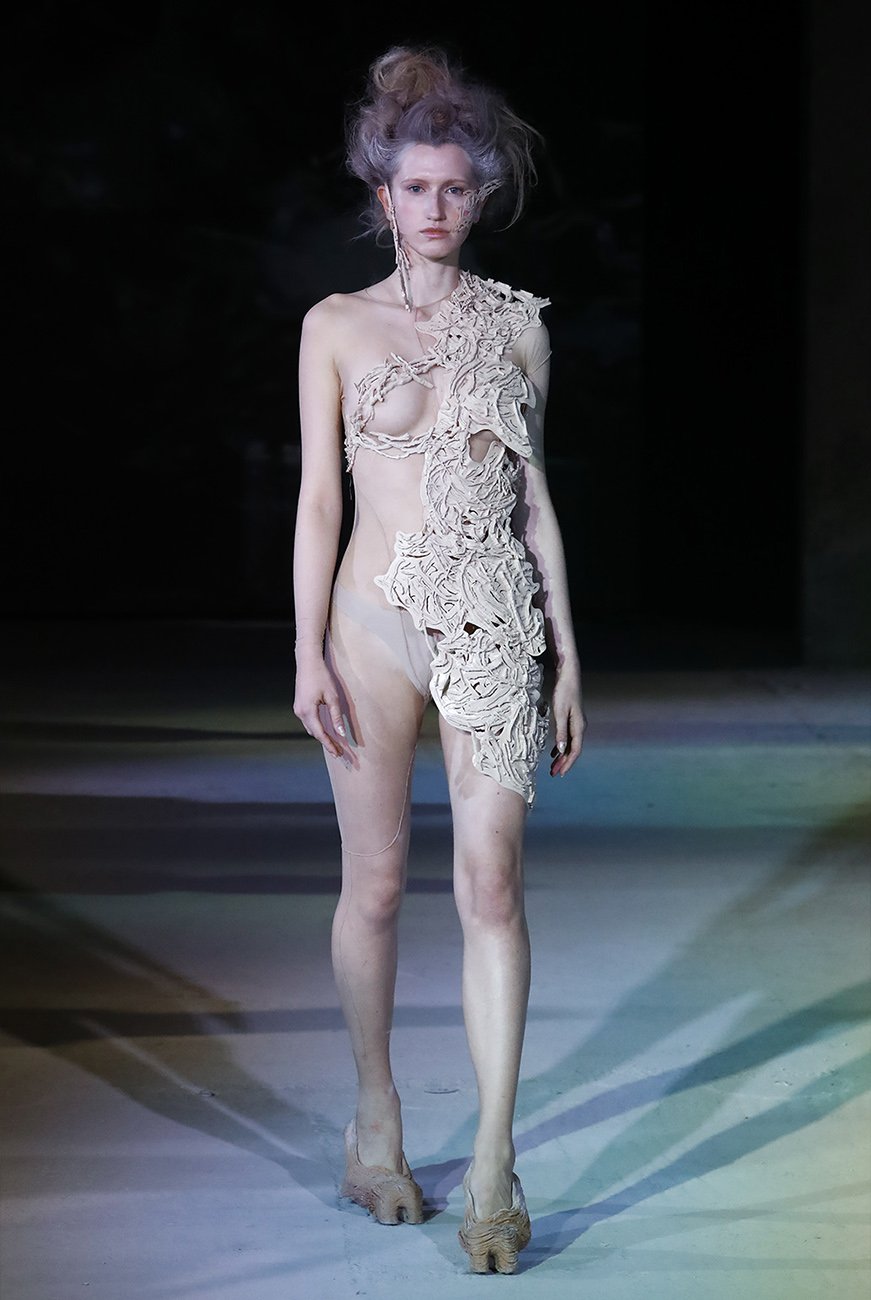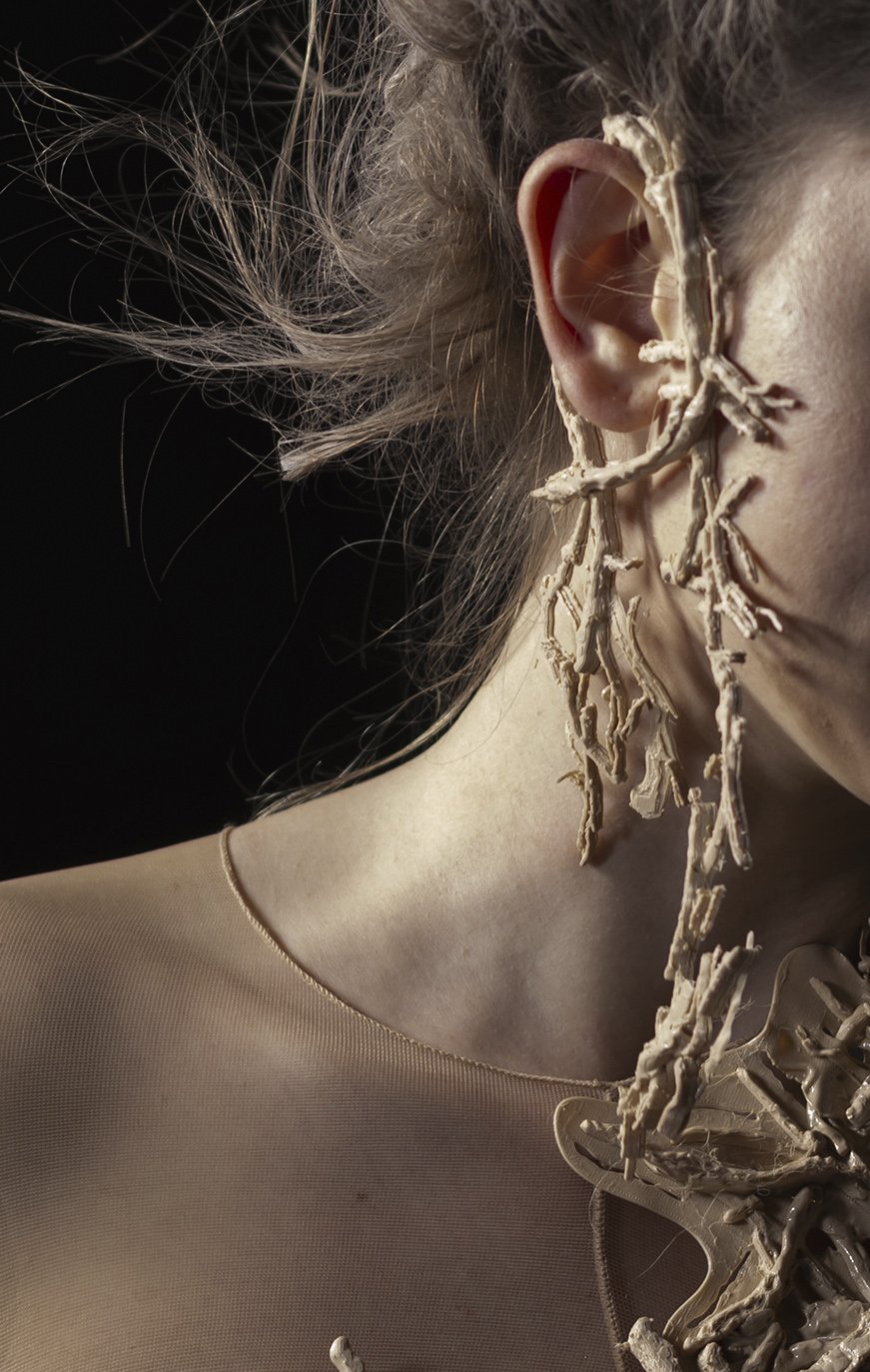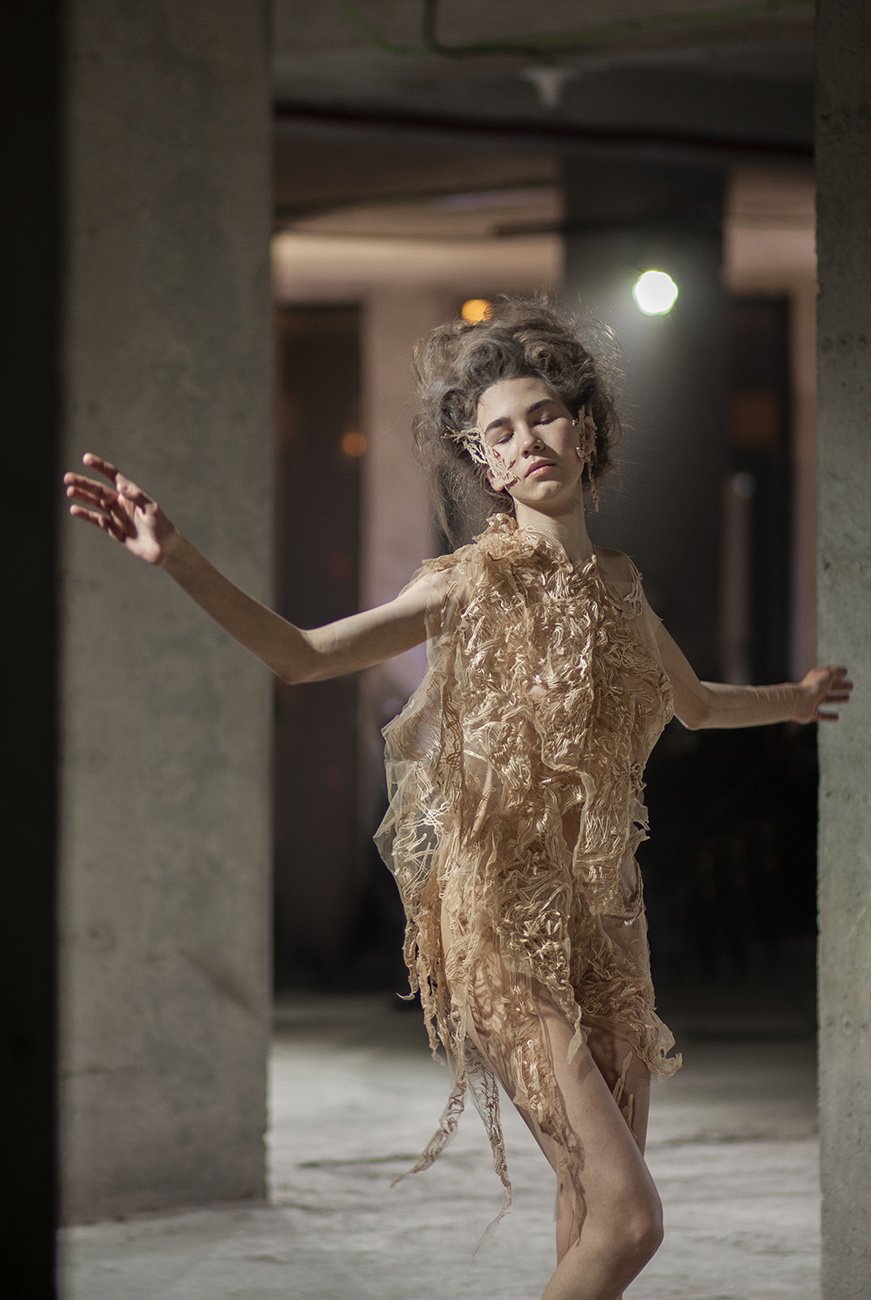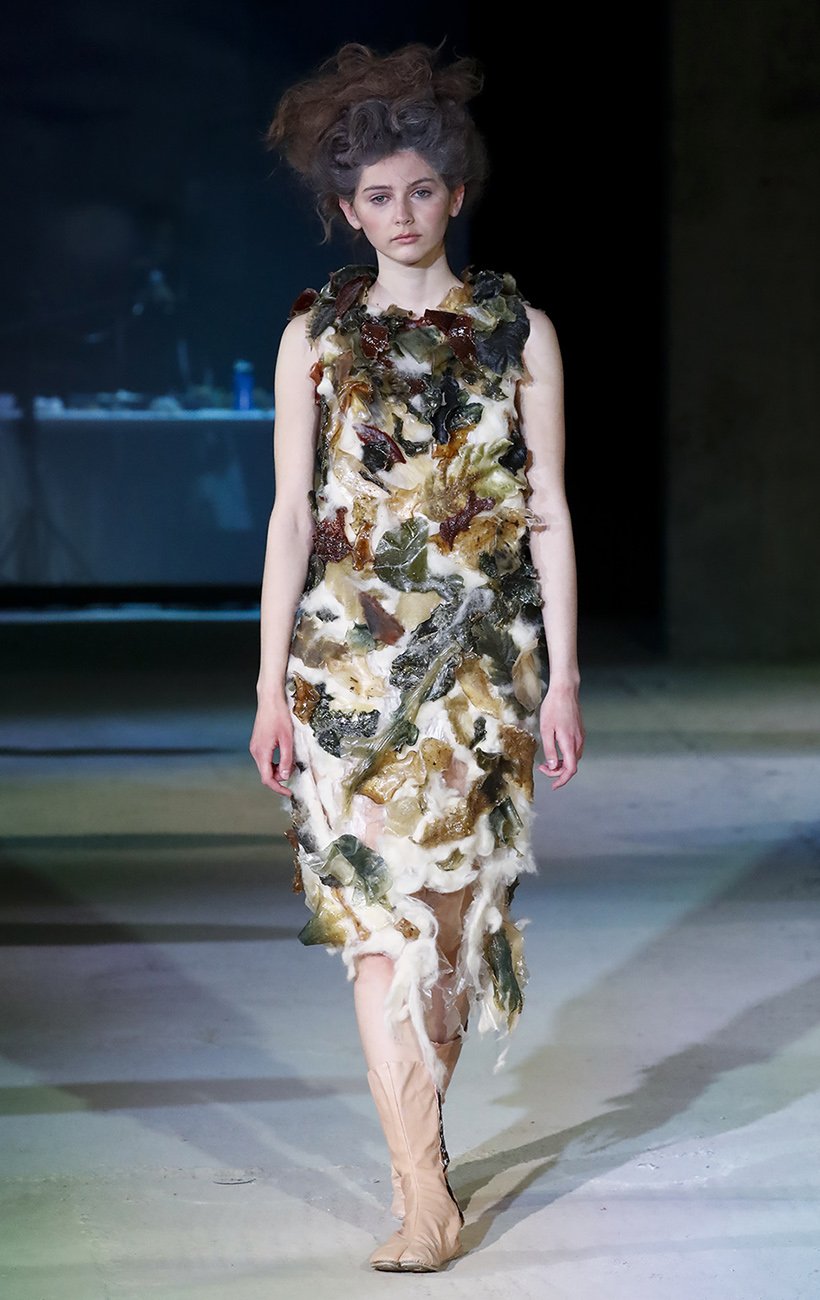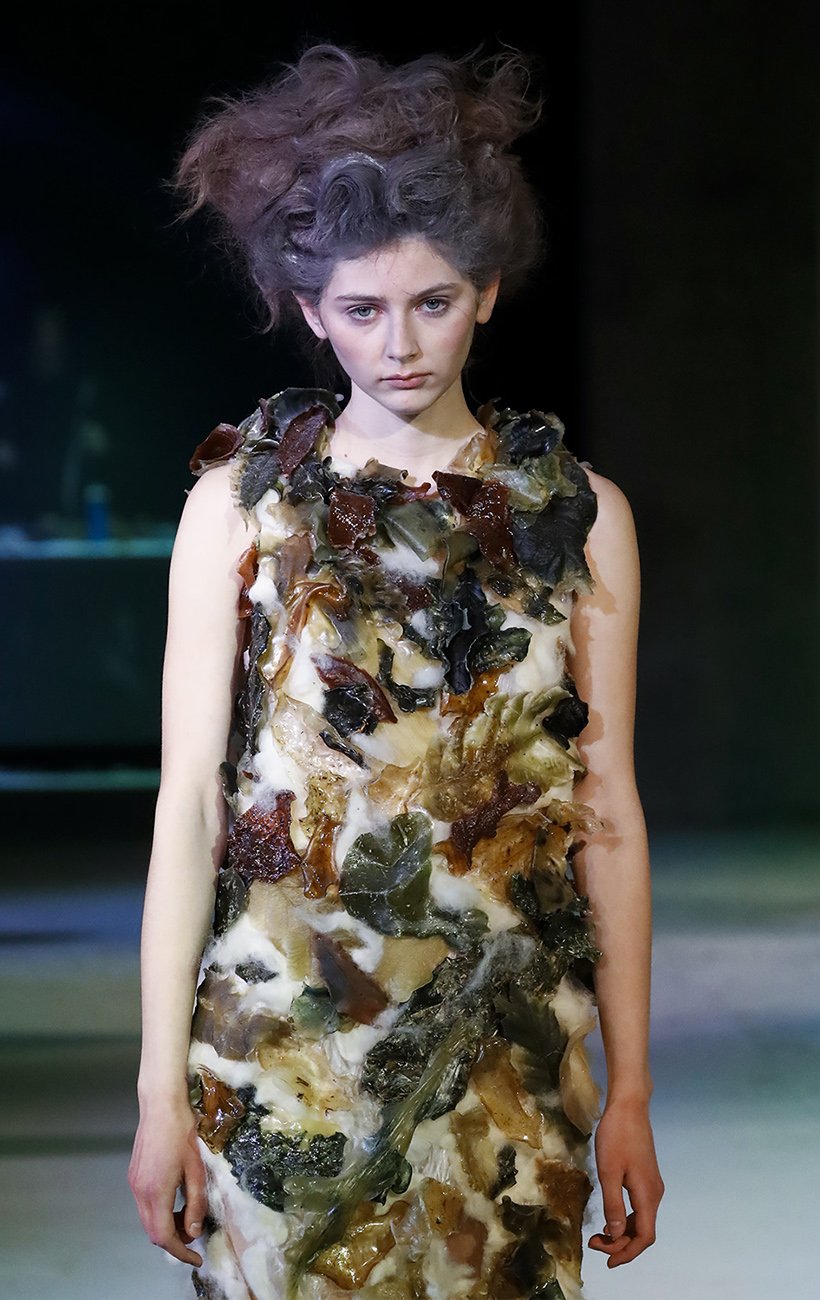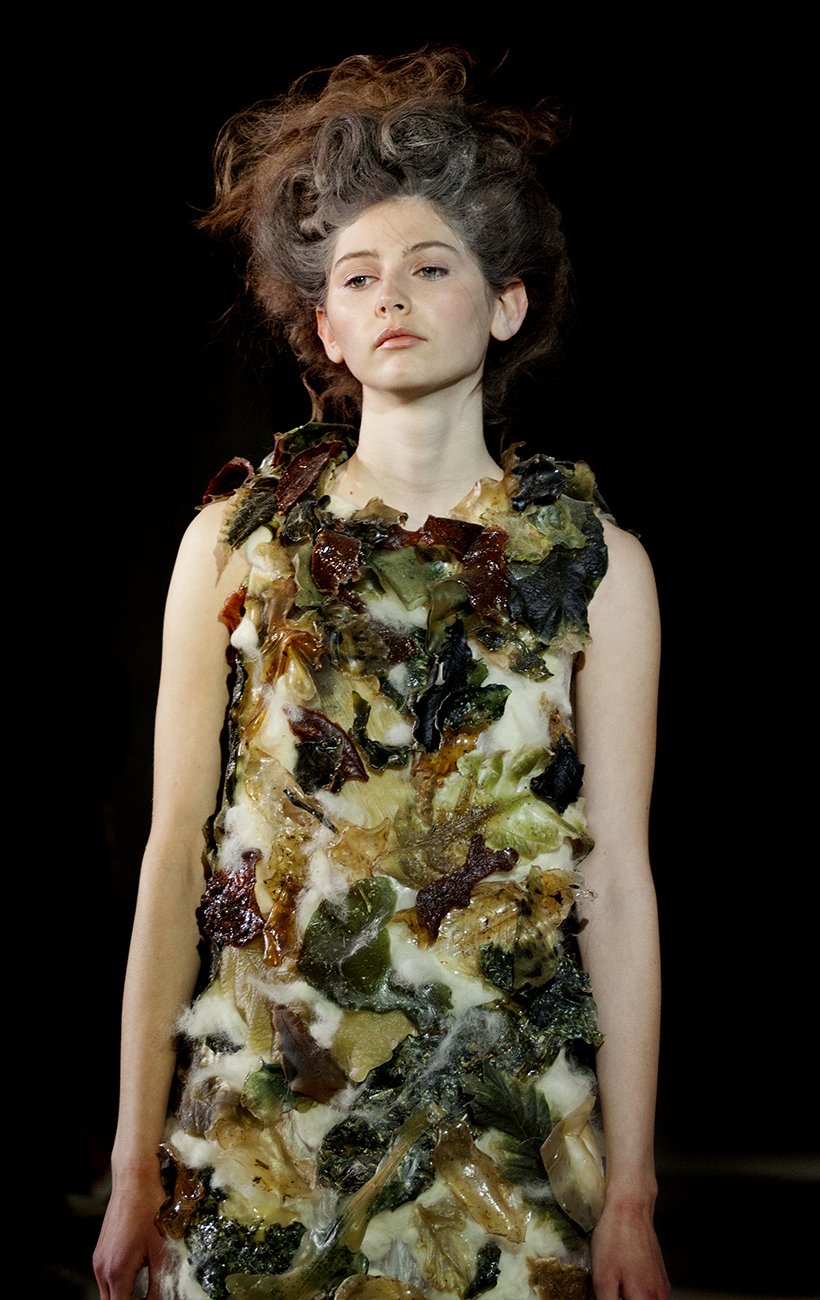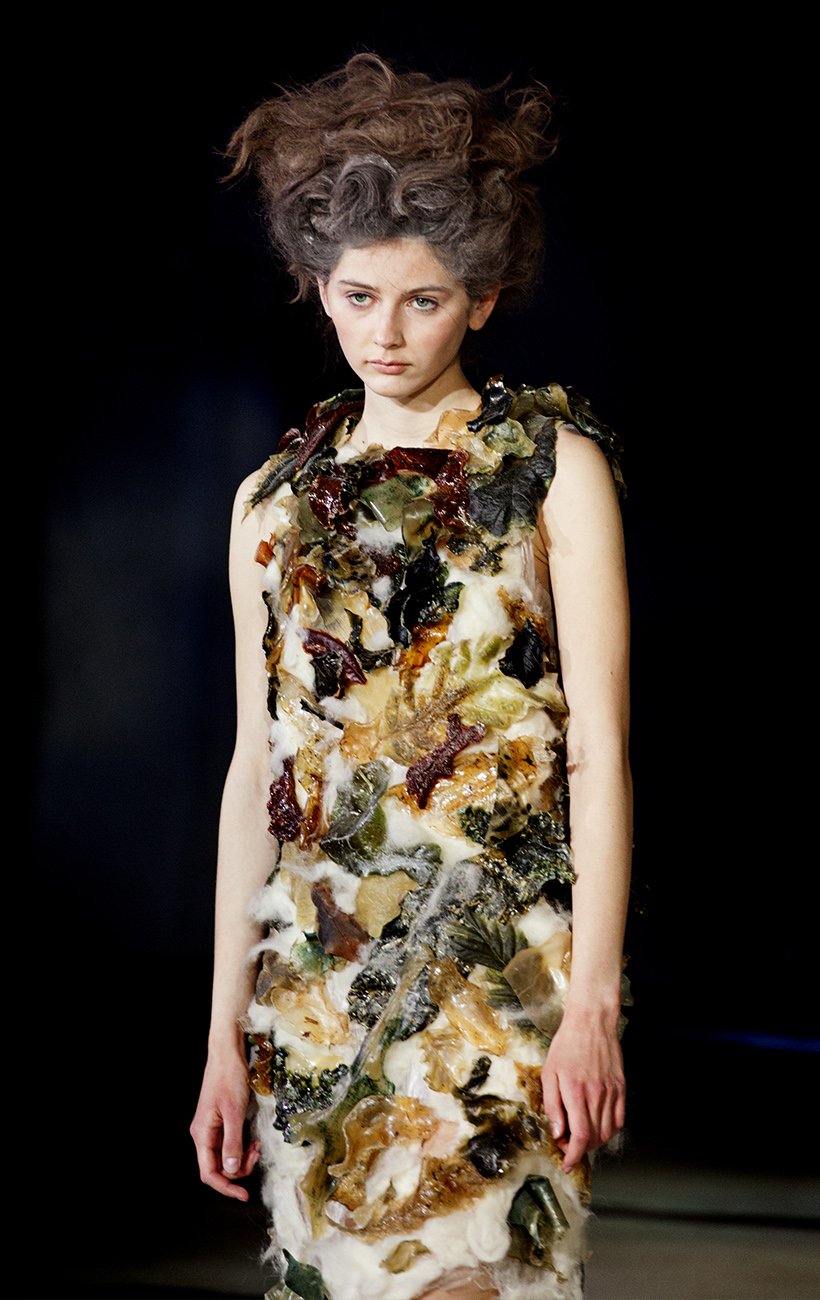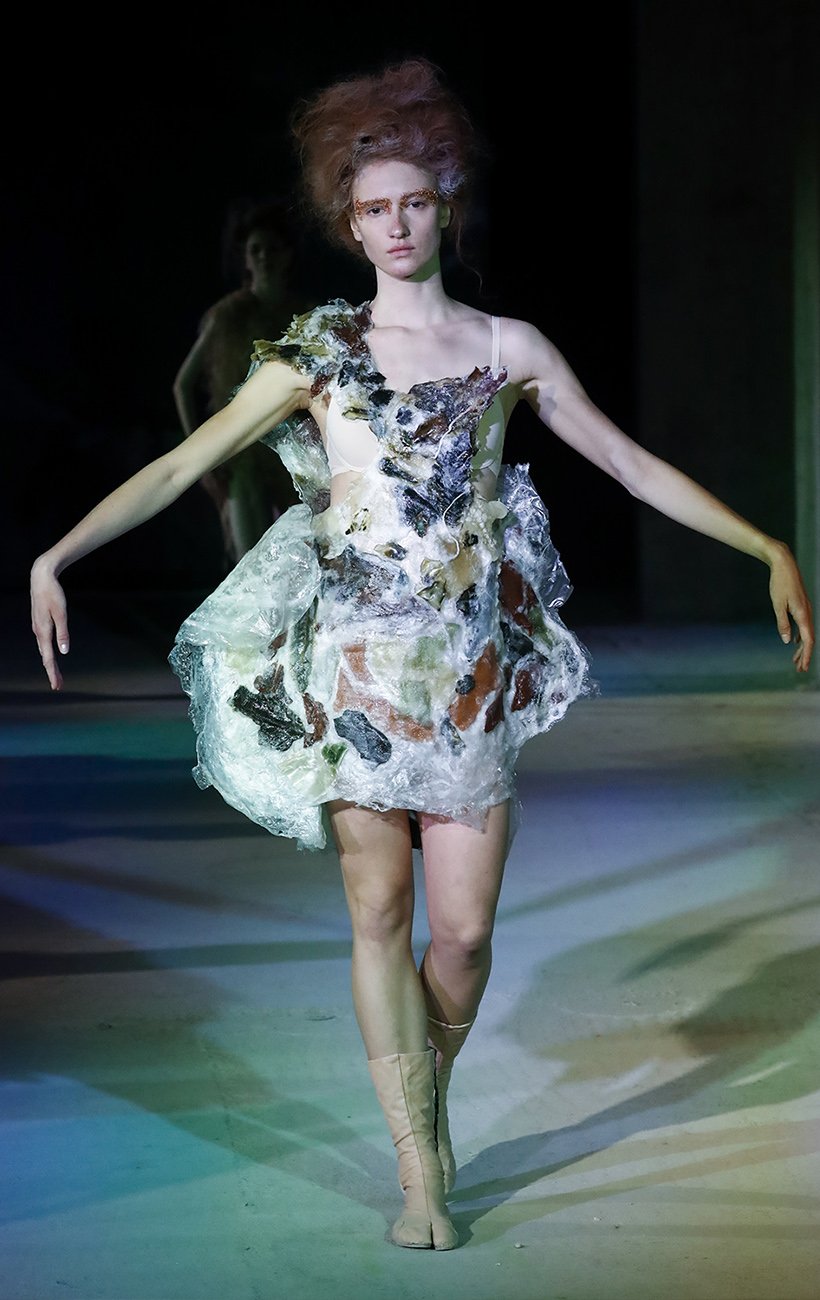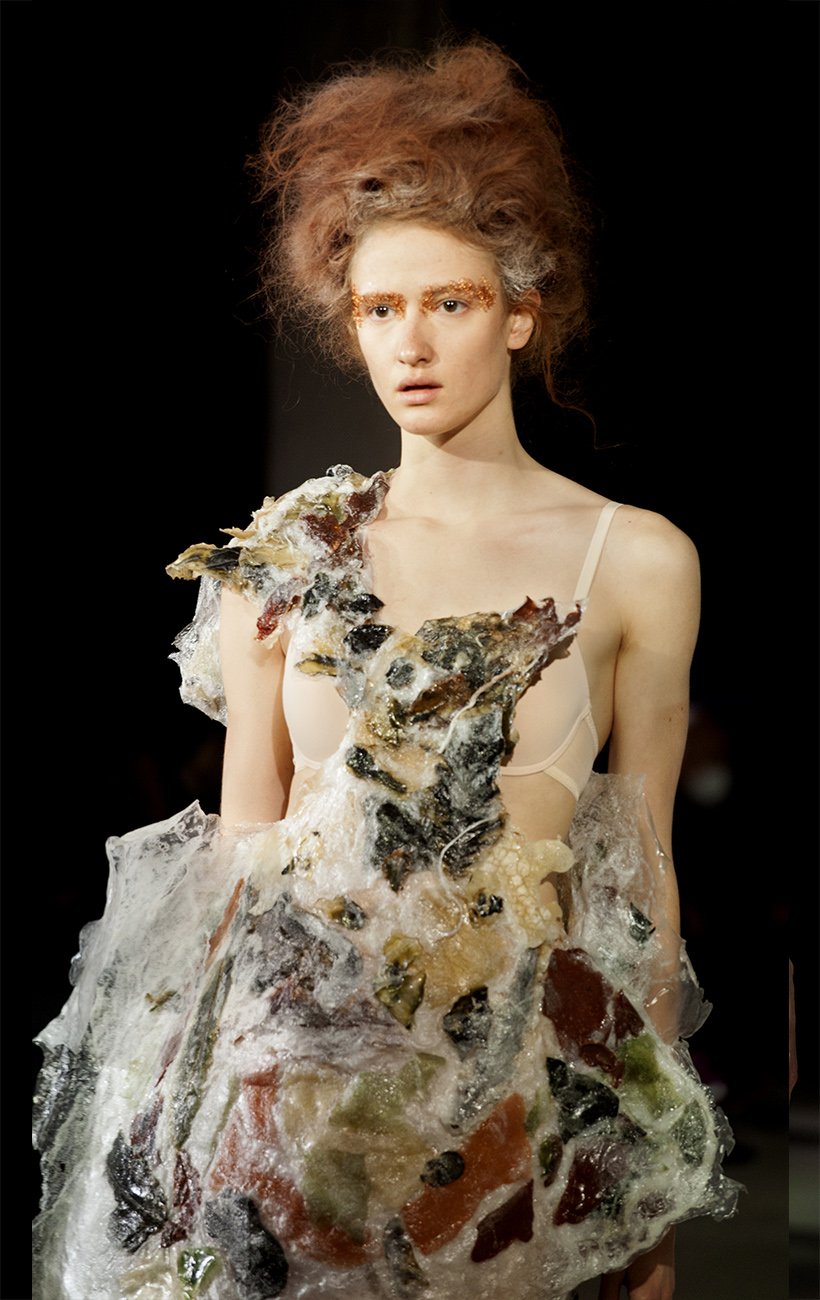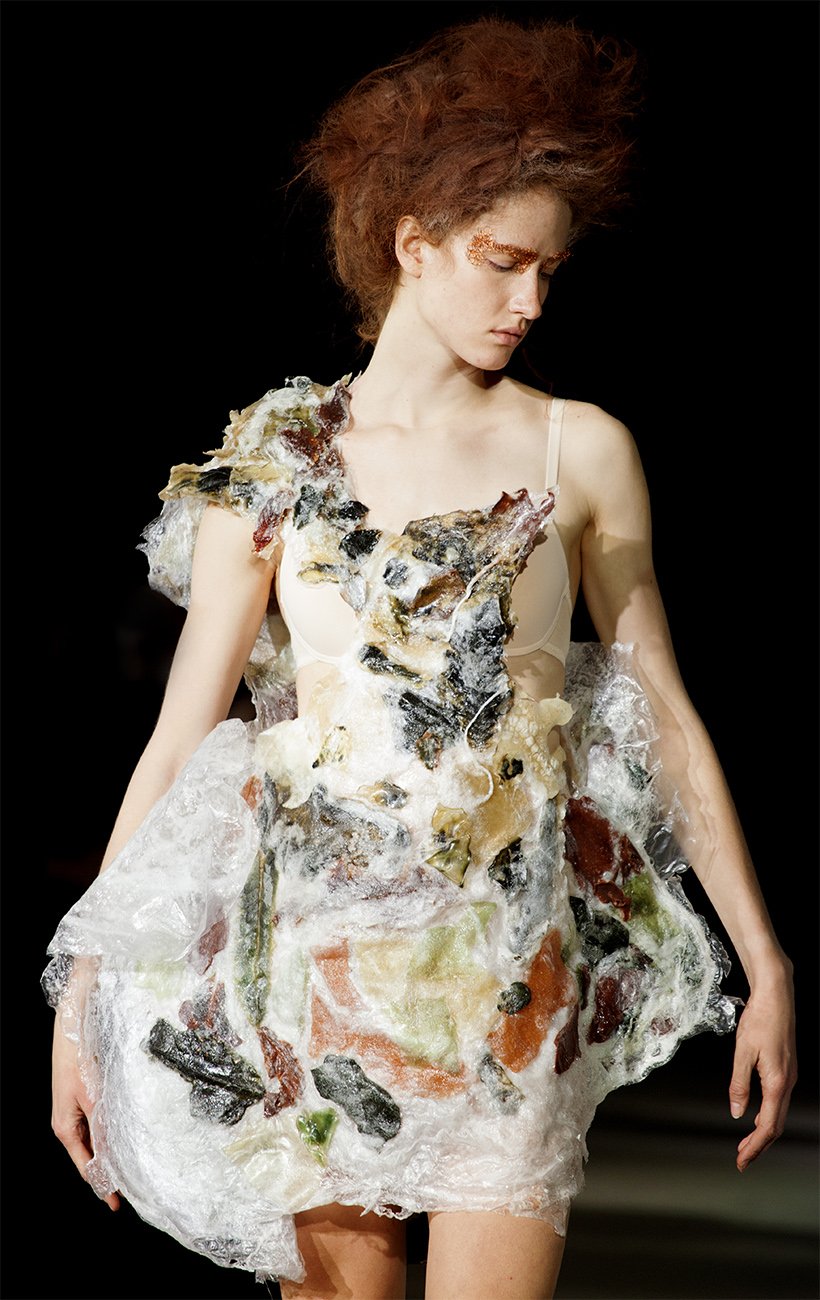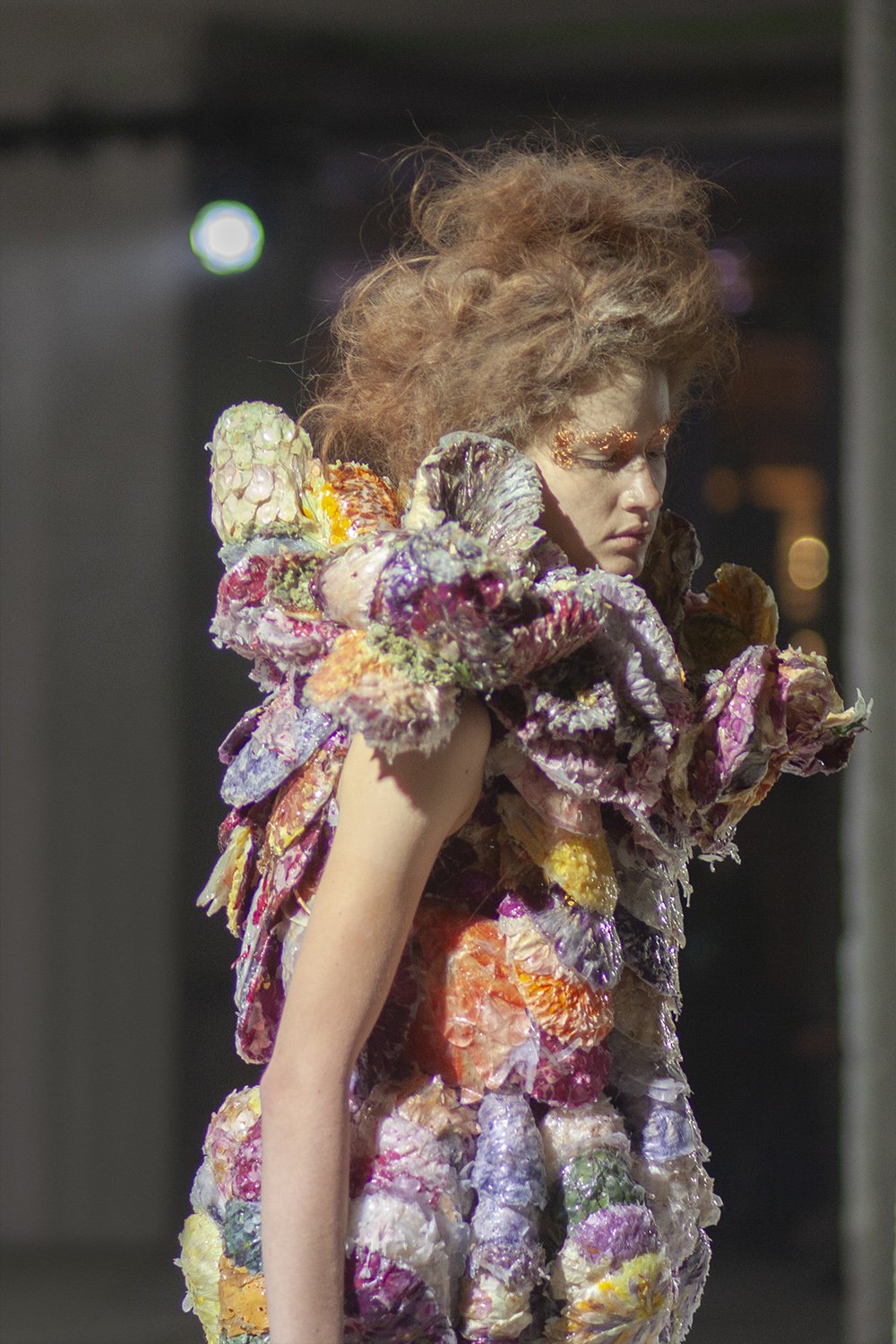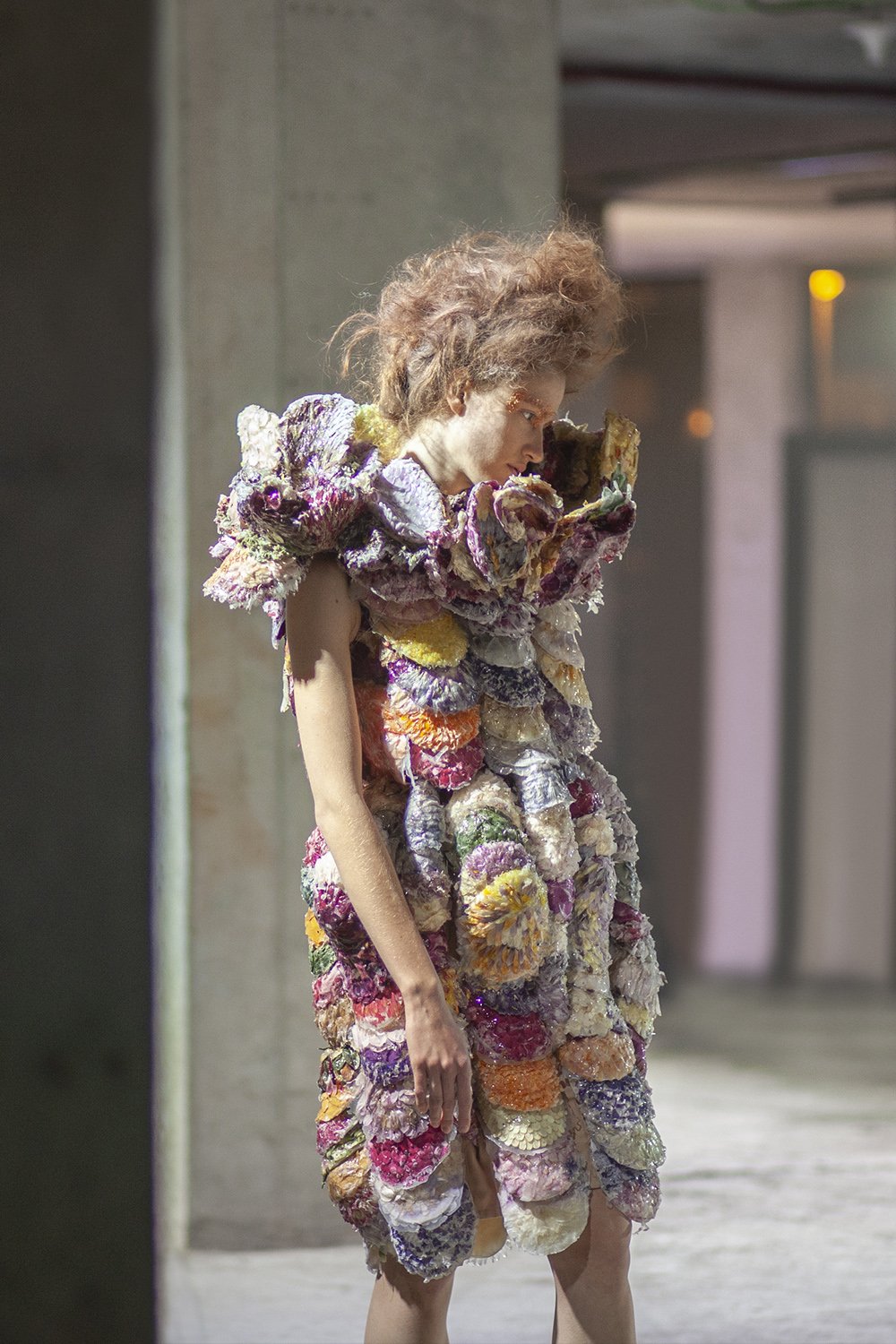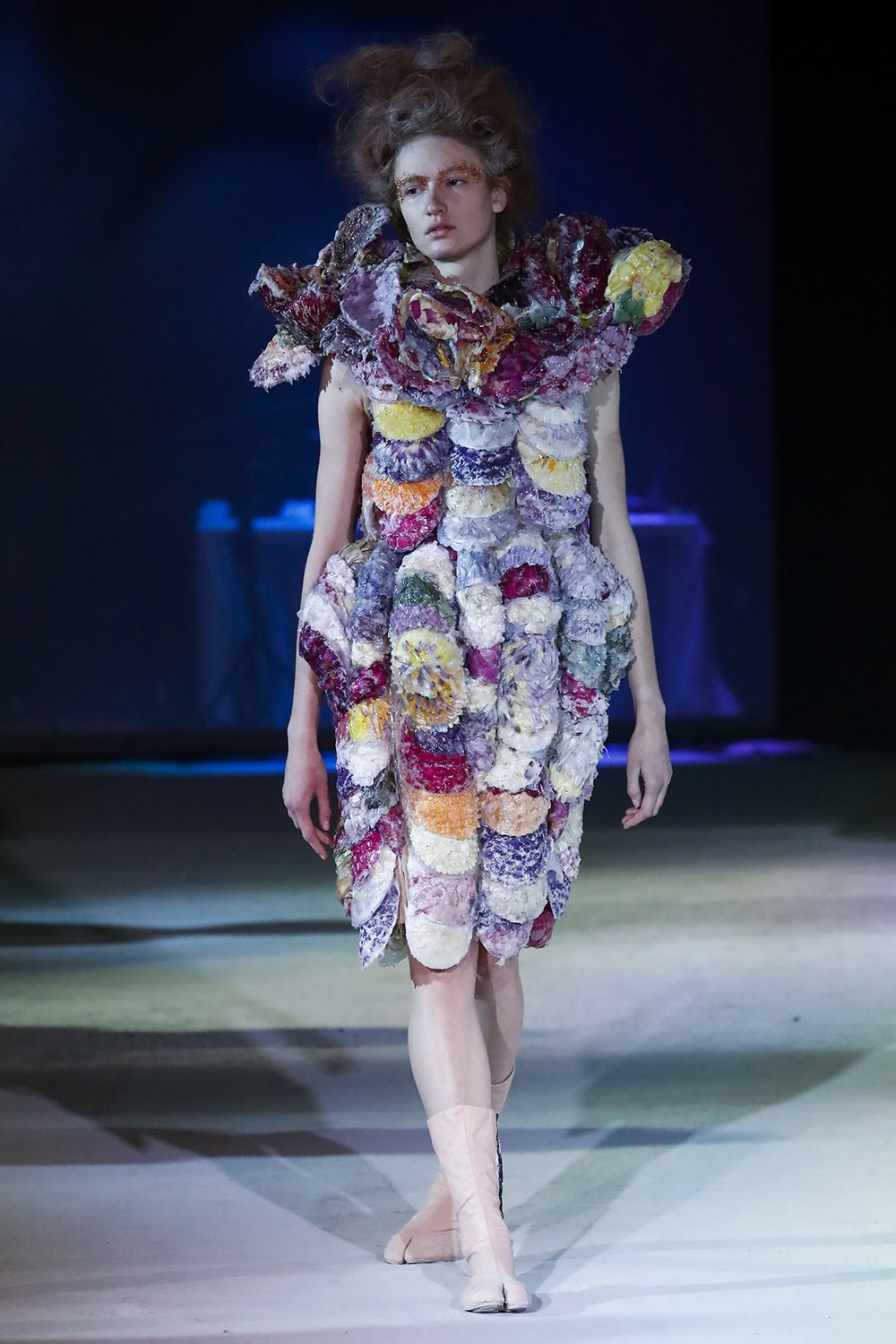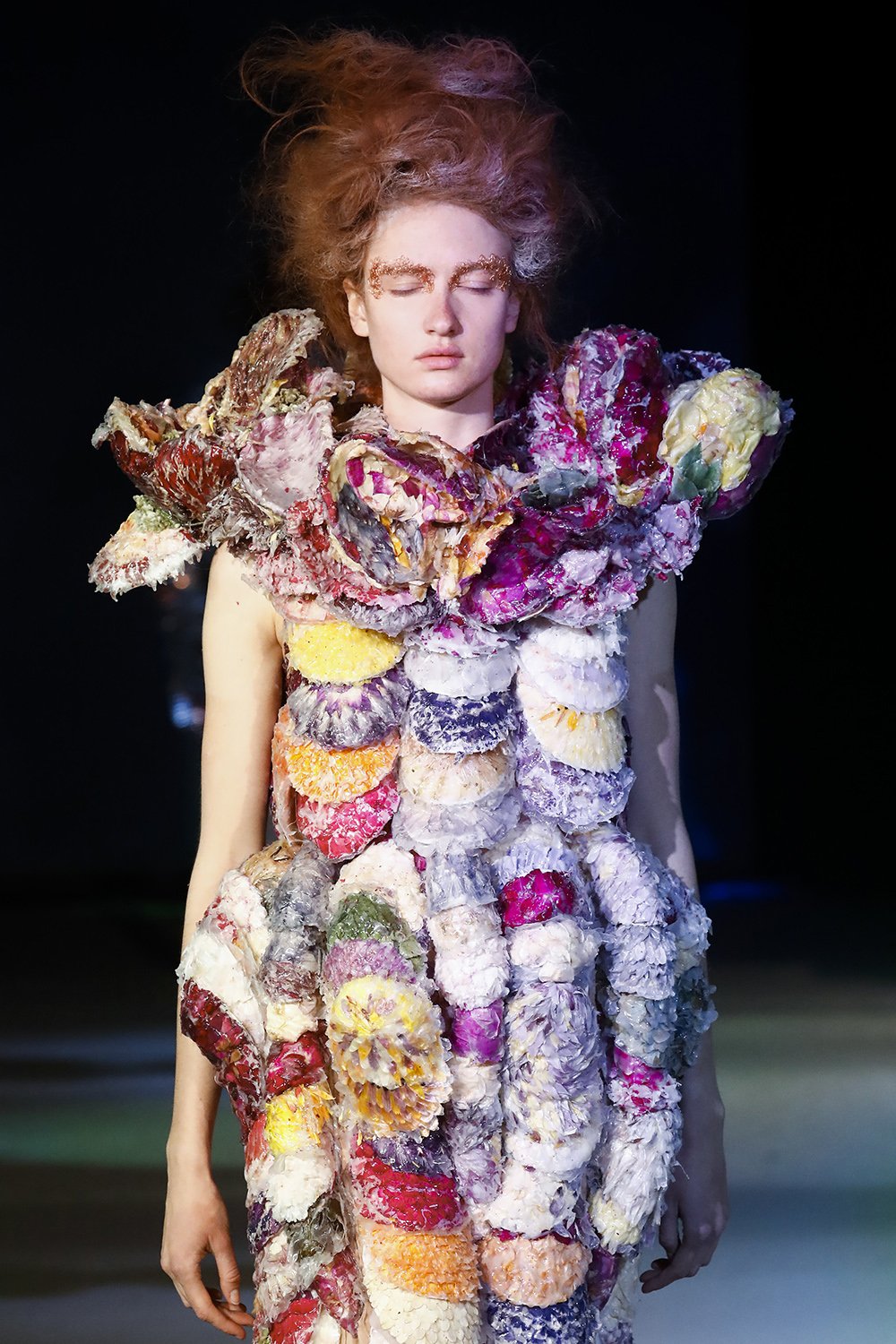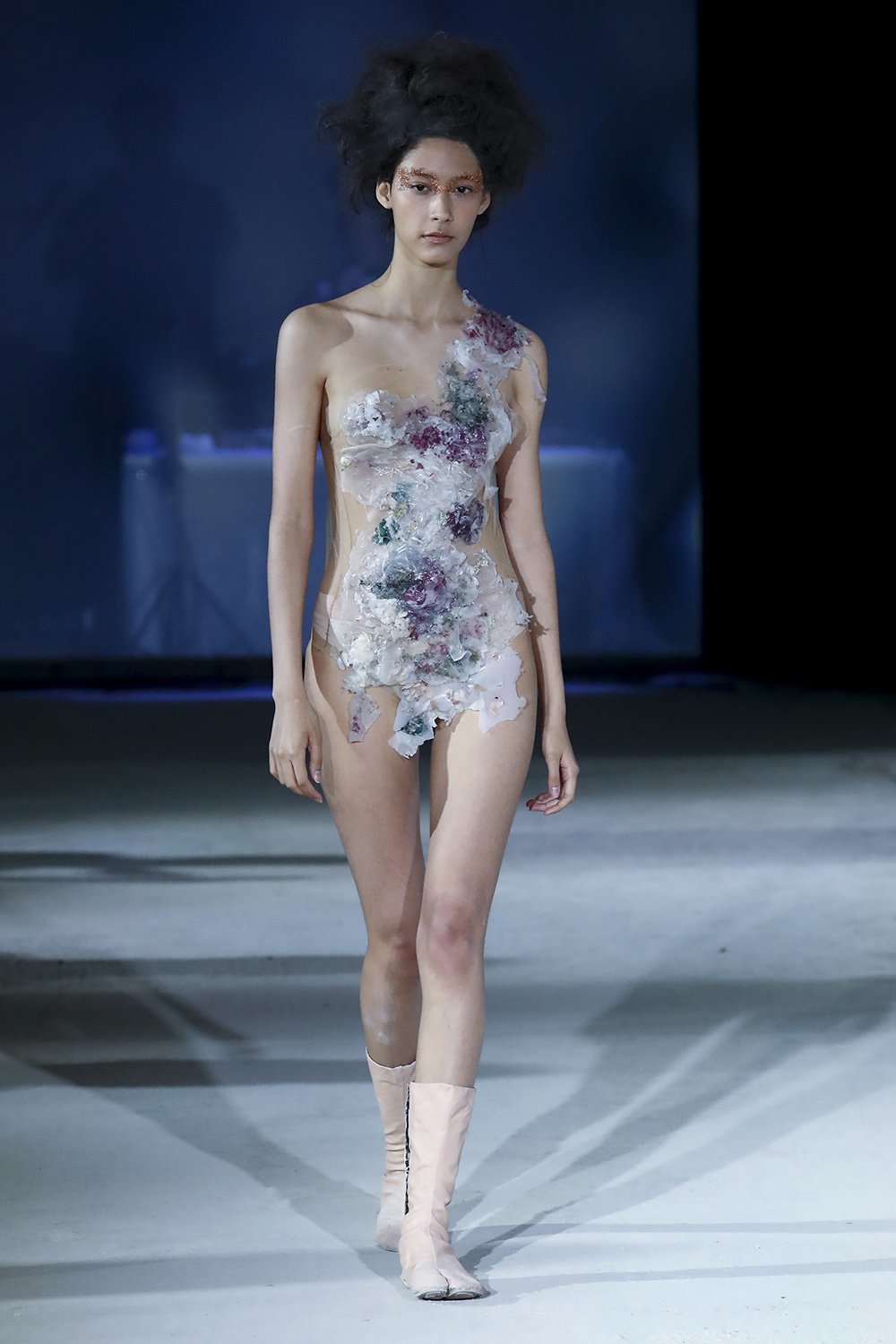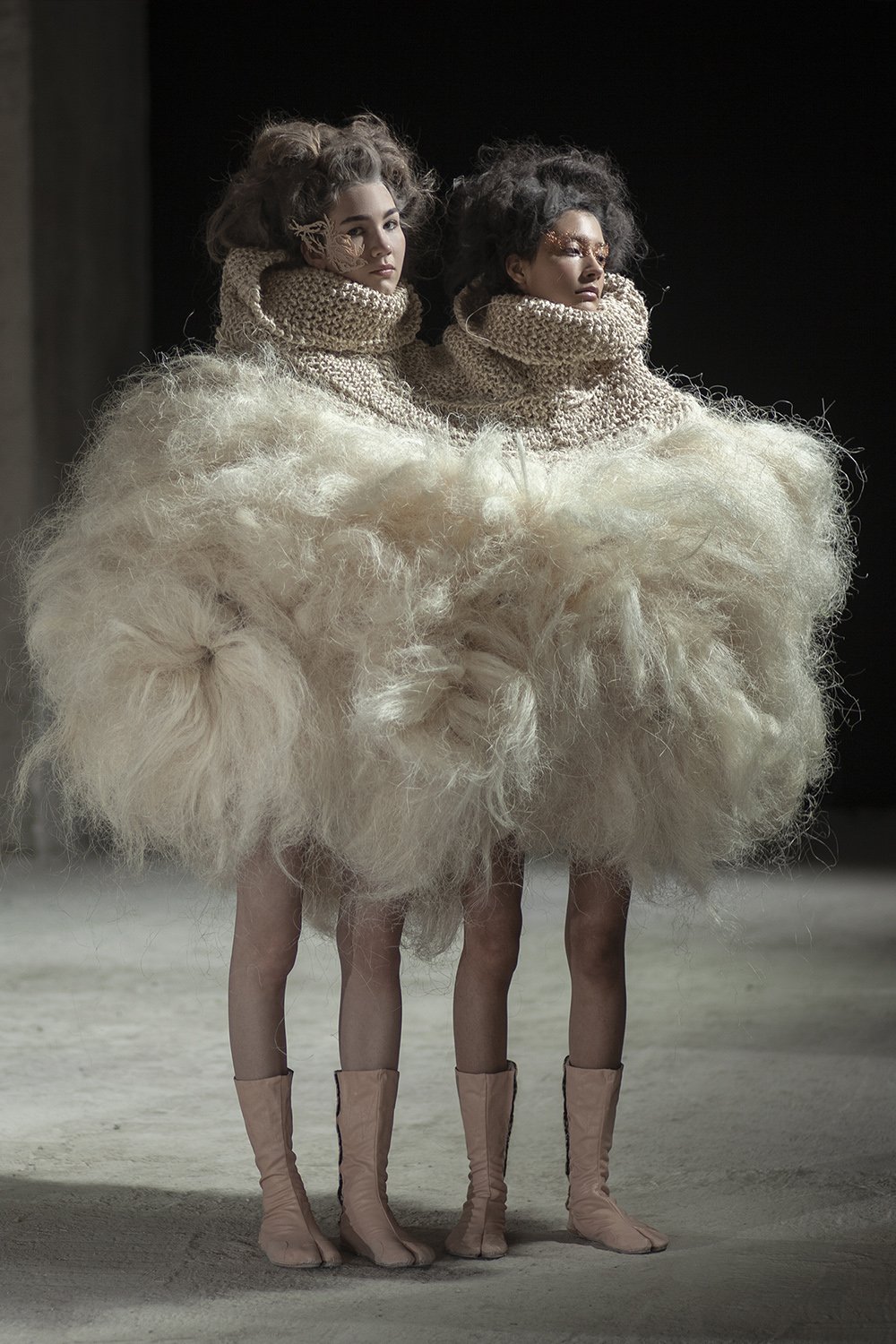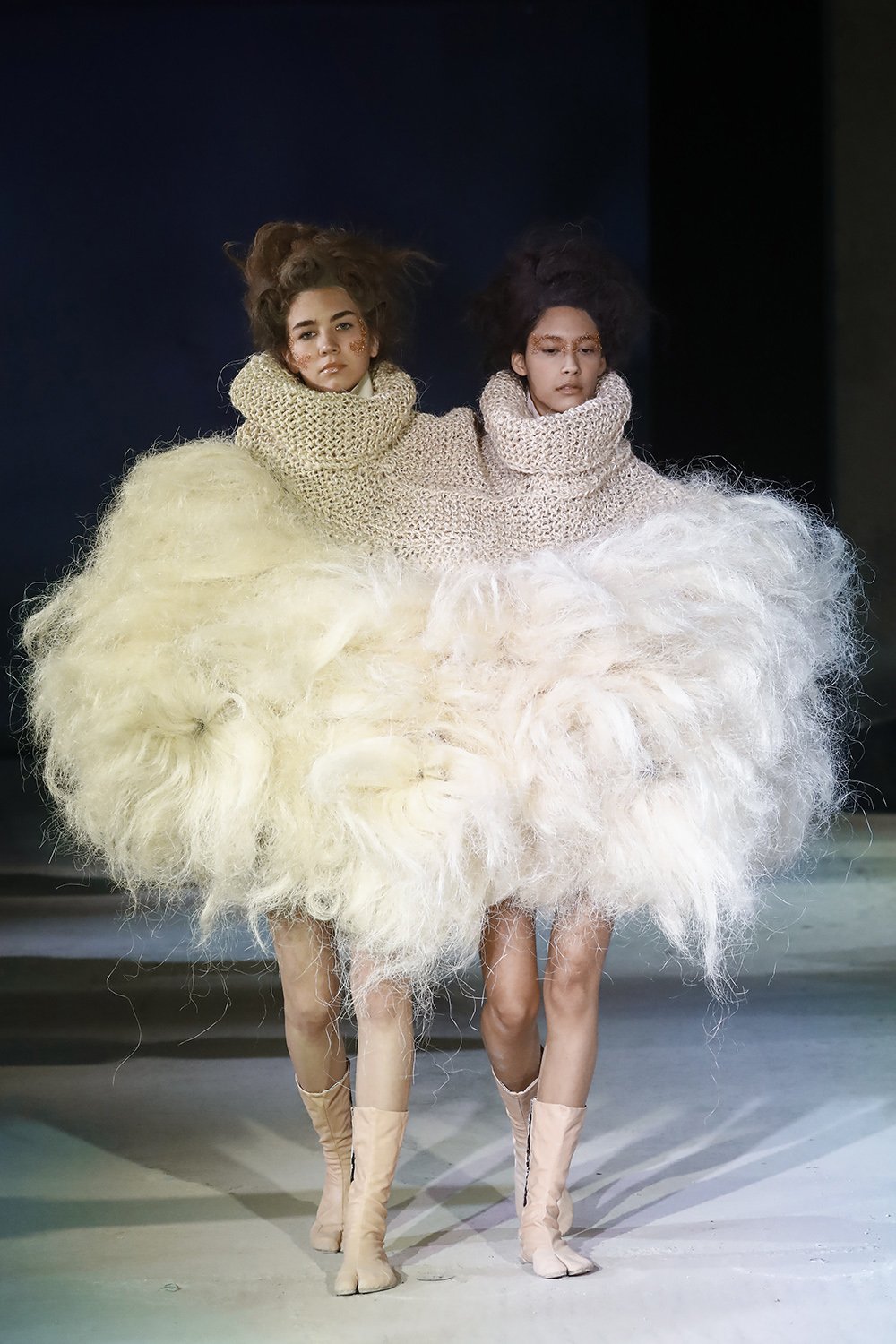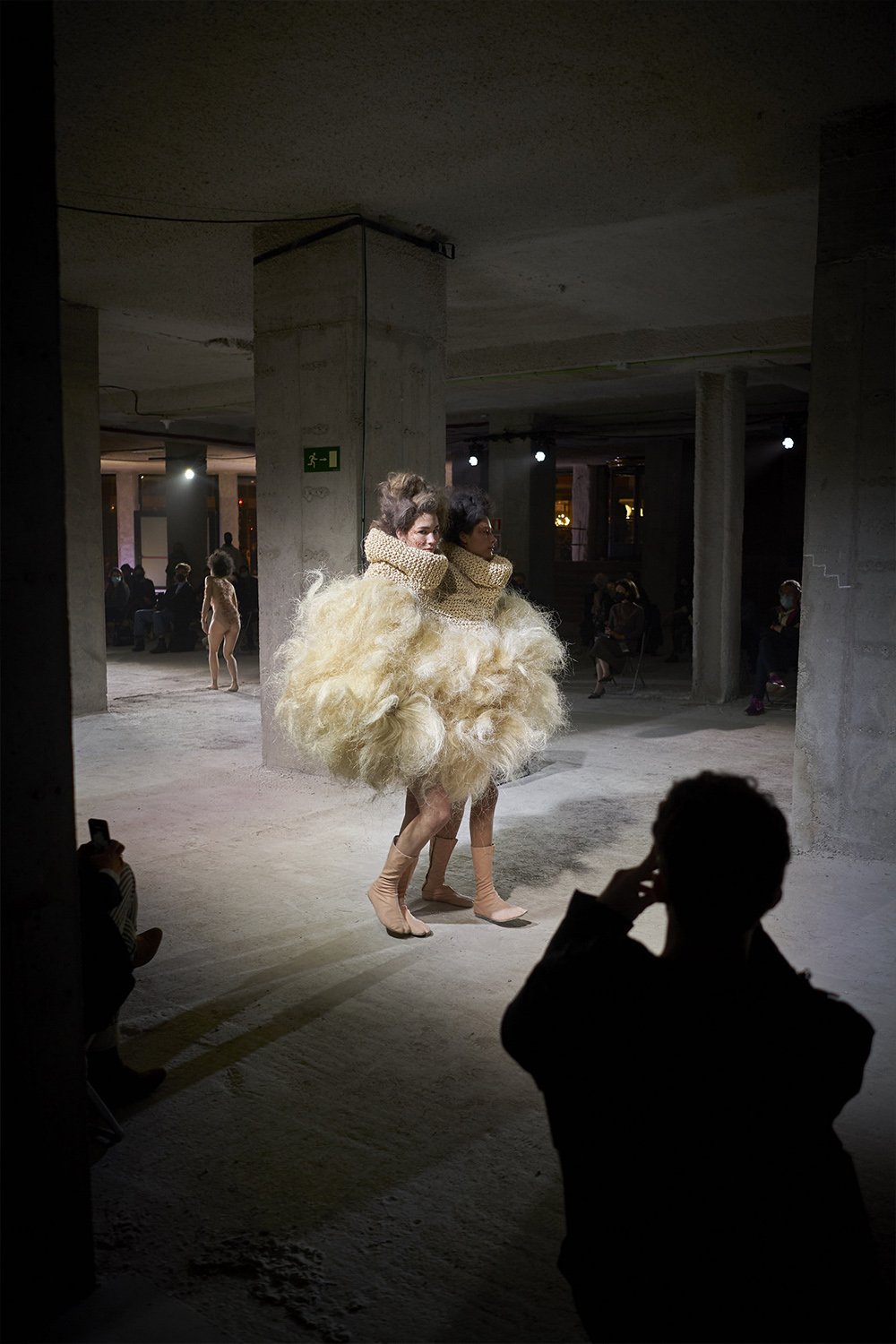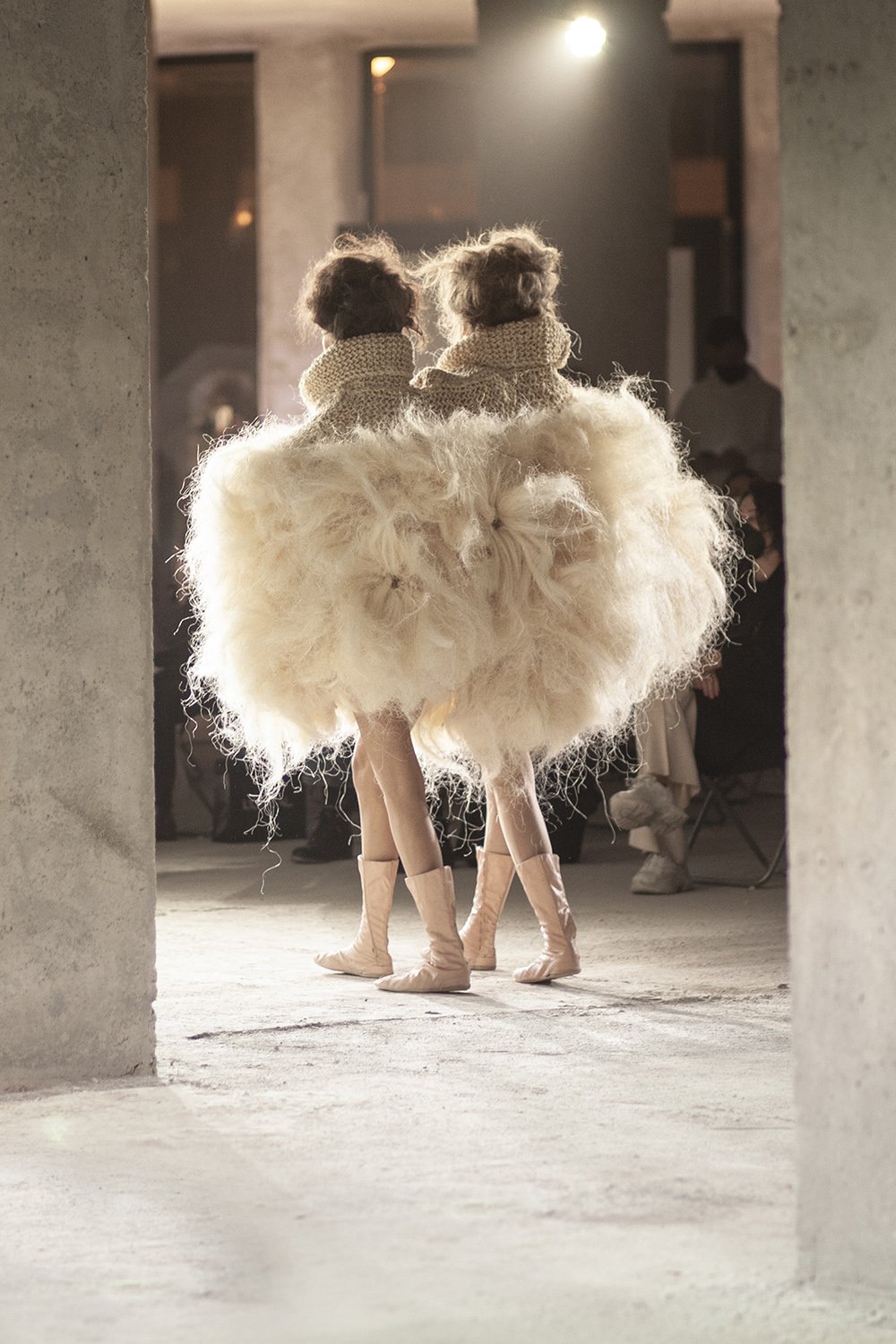NIDOS AW2122
A DIALOG BETWEEN BODIES, ANIMALS, & HUMAN ONES.
NIDOS
This collection is inspired by the most primitive architecture coming from nature: Nests. Both in its protective and material qualities, understood conceptually in a wider sense as skins or body envelopes that dissolve the limit between body, garment and architecture.
The project investigates the material relation of birds and insects with its surroundings as well as its adaptive capacity. They rescue leftovers provided by their own ecosystems, using branches, feathers, mud or leaves and incorporate plastics or aluminum into their artistic creations due to human impact on the environment. These nature architects manipulate a wide variety of materials using very sophisticated techniques to build their nests.
NIDOS searches for new relations between nature, fashion, architecture and materiality that allow us to design in a more sustainable and sensitive way with our environment. The goal is to create a new material culture that gives value to the important things that surround us. This project seeks to transform the invisible into something beautiful.
CREDITS :
Project by: Buj Studio ( Director Raquel Buj)
Seamstress support: Carmen Granell vestuario
Assistants: Manuel Escurís, Petra Garájova, Claudia Varela, Josué Rodríguez, Celia del Sol, Ana García, Shannon Campelo.
THE COLLECTION
TEJEDOR I
60 WORK HOURS
Copper filament embroidered on elastic tulle
Weaving birds build their elaborate nests by weaving fine fibers from leaves, grass, and branches, knotting them together through a very meticulous process.
For the production of this garment, we have looked at its construction and weaving processes.
TRICOPTER
180 WORK HOURS
Electronic pieces from used computers + biofabricated gelatine bioplastic
Trichoptera larvae protect themselves building cases around their body with materials from their surroundings such as sand grains, stones, leaves, seaweeds, mollusc shells joined with a sticky silk they produce.
For this garment, we got inspired by these insects building cases.
MOSCÓN I
384 WORK HOURS
Architecture insulation (polyurethane foam leftovers)
The Moscón bird builds its nest with vegetable fibers and tree fuzz creating a soft and structural space.
For this garment, we got inspired by the idea of creating soft space with an appearance of hard texture.
MOSCÓN II
280 WORK HOURS
Platinum silicone + fabric and wool
The Moscón bird builds its nest with vegetable fibers and tree fuzz. The interior is a soft space covered with wool and fuzz.
For this garment, we got inspired by the idea of creating soft interior space , a second embrionary skin.
TEJEDOR II
352 WORK HOURS
Copper filament embroided
Weaving birds build their elaborate nests by weaving fine fibers from leaves, grass, and branches, knotting them together through a very meticulous process.
For the production of this garment, we have looked at the construction process and also at its volumes, using copper wire as the main material, knotting it entirellyby hands.
TURPIAL
572 WORK HOURS
Naturally fallen rooster feathers + recycled plastics taken from the inside of unusable computer screens.
In addition to feathers, some birds have started to use other types of insulating materials such as aluminum foil. The black kites use plastics on their nests to contrast themselves from the natural environment and also make visible their social dominance.
The collected unused computer plastics are laser cutted as artificila feathers. The idea is to create a nest envelope whose natural and artificial feathers mix themselves to blur the limit
HORNERO
360 WORK HOURS
Paper mache made handmade from collected and recycled newspapers
Closures by electrical copper cables.
The Hornero birds (or "Bricklayer") build their nest with a clay mass created with mud, straw, roots and branches. The structure gets solid after drying, being able to withstand adverse climates becoming their home for several seasons.
For the production of the piece, we took the shell shape of the hornero and its irregular texture as inspiration
ORUGA DE TIENDA
500 WORK HOURS
Fallen trees branches + silicone molds and transparent resin
Tent caterpillars build their nest in the tree’s branches. They create a silk envelope around them. We have been inspired by this protection space.
This garment explores an intimate and strong protective nature around the body.
COBIJADA
368 WORK HOURS
Architectural acoustic insulation from recycled cotton fibers + textile
The Pinzón bird builds its nest with a spherical shape using moss mixed with thin roots and grass covering the interior space with feathers and hairs.
For this garment, we got the inspiration in this soft and intimate spherical space for the body.
VELUTINA II
156 WORK HOURS
Flexible 3d printing on tulle.
Vespa velutina nest is a shell created with several layers of material collected from the environment. For this garment we were inspired by these animal deposit material and the organic texture they generate manipulating it with their mouth.
ARRIERA I
288 WORK HOURS
Fallen tree leaves as molds + Agar-agar, spirulina and gelatine based bioplastics and wool fibers.
Weaver ants build their nests sewing leaves.
They use silk from their larvae creating a whitish sticky glue that firmly join the leaves together
ARRIERA II
180 WORK HOURS
Fallen tree leaves as molds + Agar-agar, spirulina and gelatine based bioplastics and wool fibers
VELUTINA I
204 WORK HOURS
Parametric design and digital fabrication
Vespa velutina nest is a shell created with several layers of material collected from the environment.
For this garment we were inspired by these animal deposit material and the organic texture they generate manipulating it with their mouth. It is entirely 3d printted and mixed with craft techniques.
AVOSETTA II
45 WORK HOURS
Naturally collected flowers petals + transparent platinum silicone +leftovers of Avosetta I garment (builded it at the same time)
This garment was born with the leftovers from Avosetta I as a continuous organic material transformation process that we all can learn form nature.
REPUBLICANO
416 WORK HOURS
Hand-woven jute and sisal fibers
The social weaver is a gatherer species that creates complex community shelters and protection systems, collecting on them hundreds of families and even some of other species.
They are known for their social habits and life in community. We have been inspired by their nests to create this double suit which is also shared. It works as a care and protection space.
Photos taken by : Juan Antonio Papagni Meca, Juan Rayos, Gala Regnault ,Biel Sol and Hannibal González.
NIDOS RUNWAY/PERFORMANCE AW2021, presented at MBFWM OFF
CREDITS:
Site: WhiteLab, Edificio Plaza de España
Music art: Borgó Studio ( Juan Borgognoni )
Movement design: Laura Indigo
Lighting design: Maxi Gilbert, XLR Studio
Visual artists & video projection photographer: 11v151131_m06, Pascal Schonlau
MUA: Maria Lorain
Hair: Yolanda Rodríguez Estilistas
Photos : Juan Antonio Papagnimenca, Juan Rayos, gala Regnault, Biel Sol and Hannibal Gonzalez
AVOSETTA I
710 WORK HOURS
Naturally collected flowers petals + transparent platinum silicone
Inspired by the envelopes formed by solitary Avosetta bees, which, unlike other species, they don’t live in a community, and they build their own homes by collecting flower petals from their environment. This species meticulously join them using their own nectar to build this incredible kind of shell.
We got inspired by both their volumes, their building methodology and their ability to create beautyness



